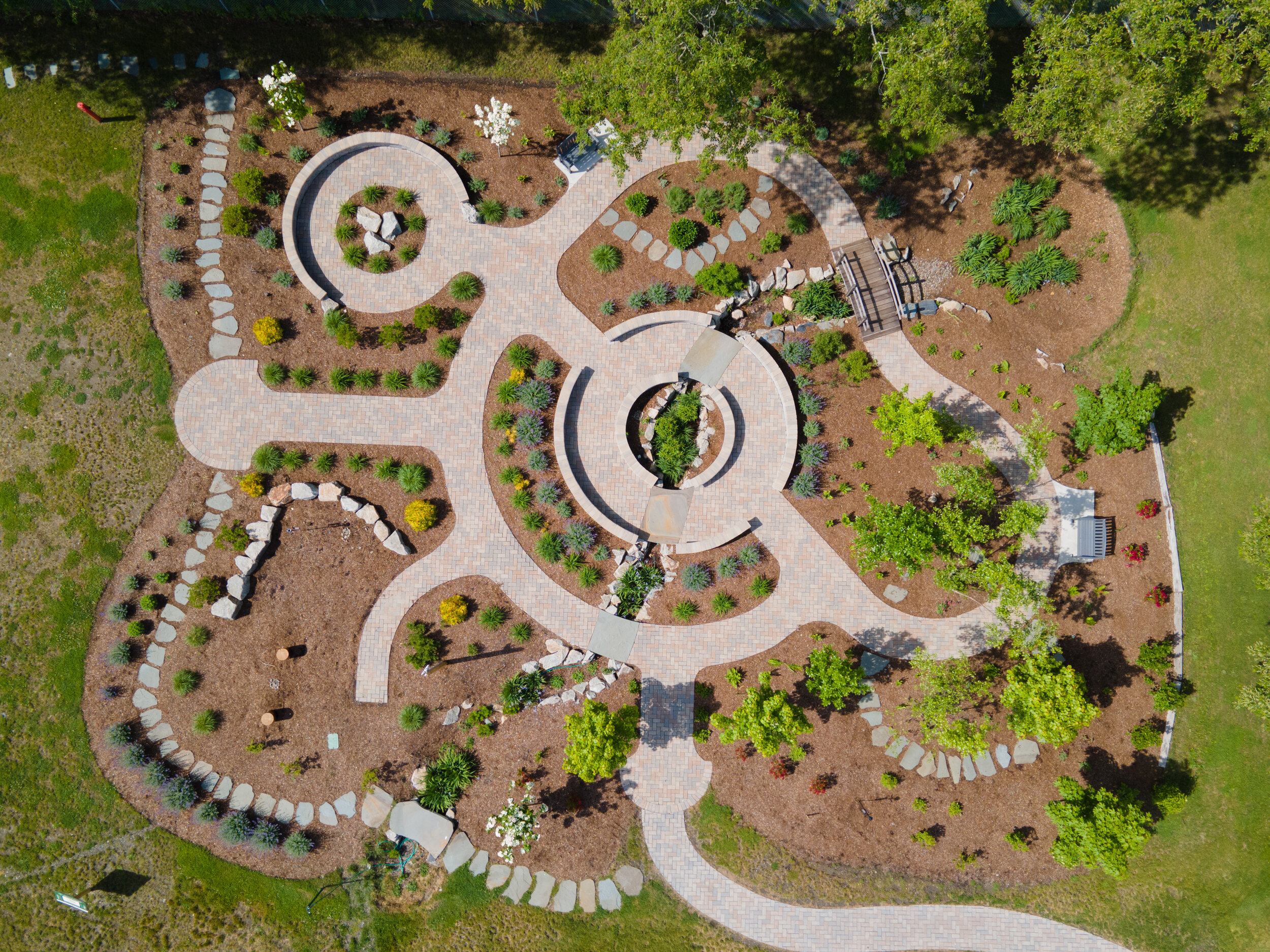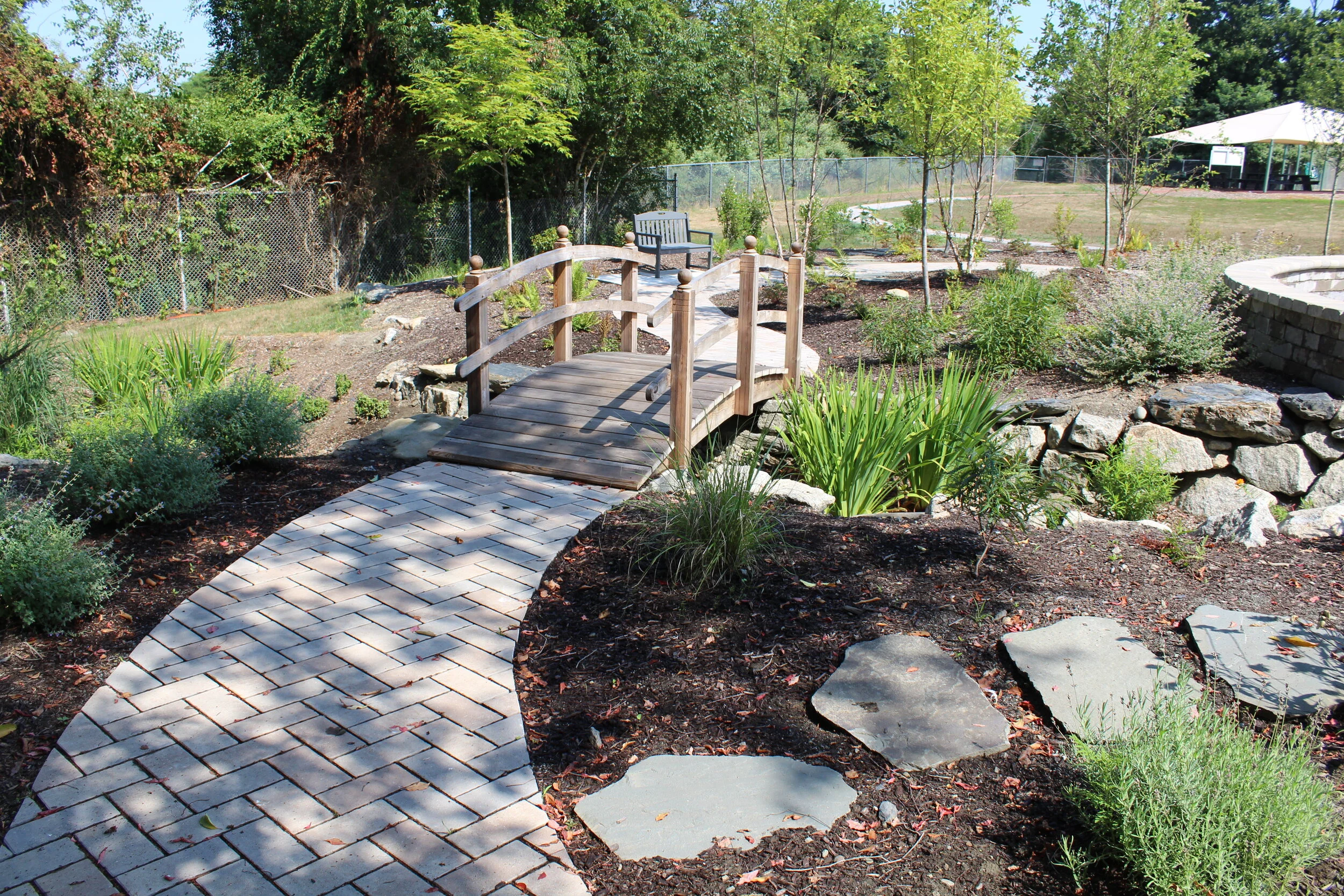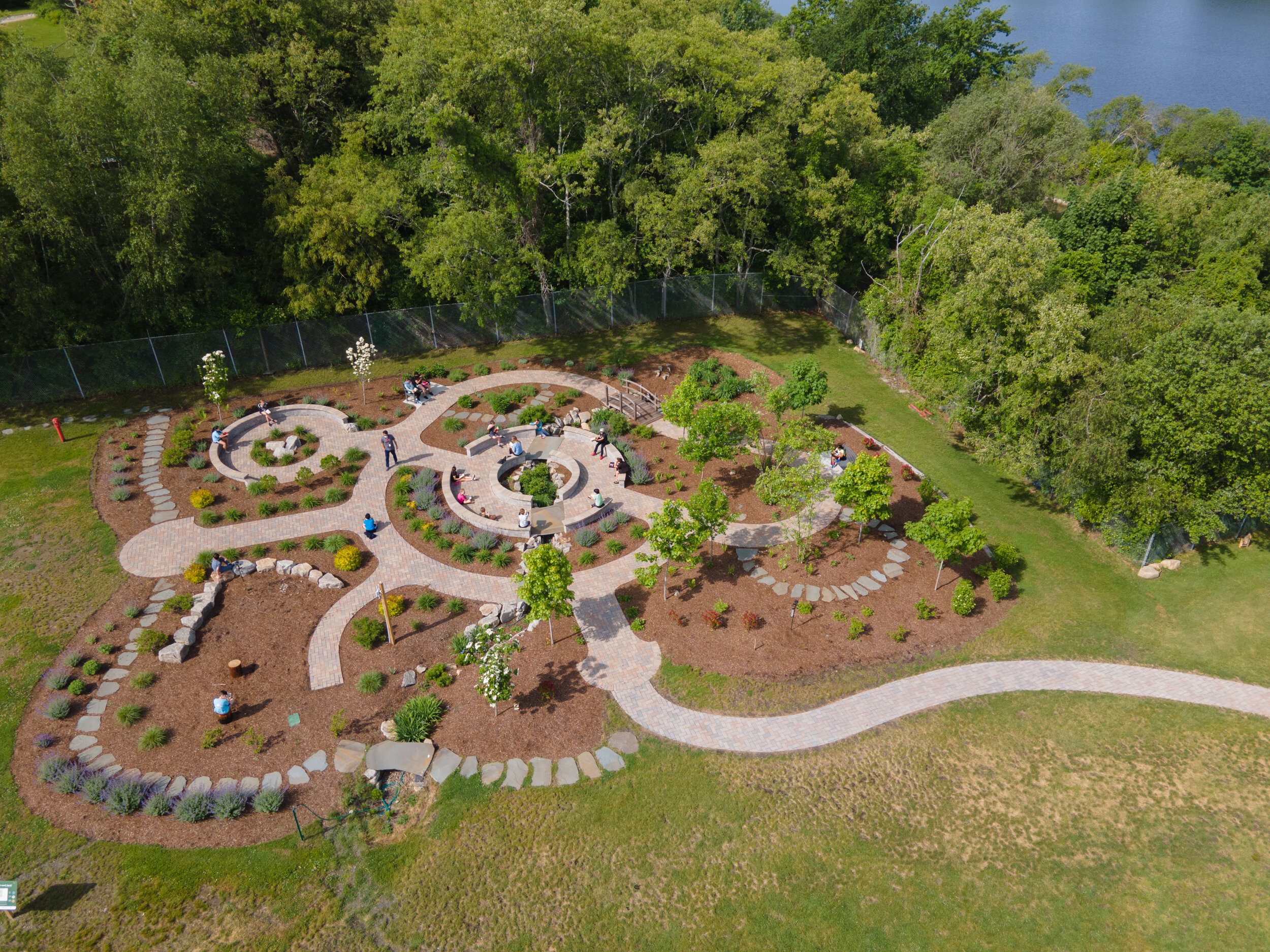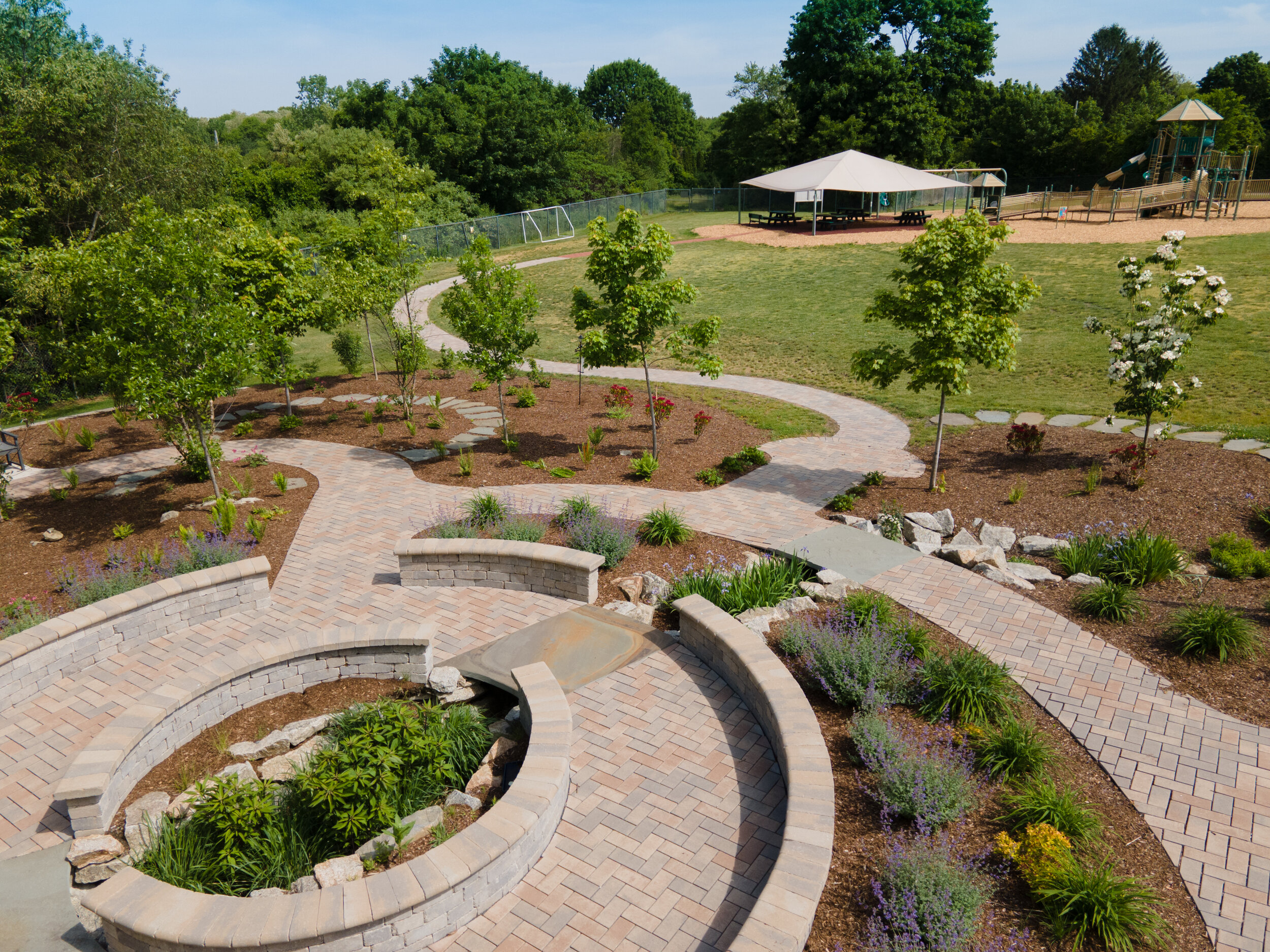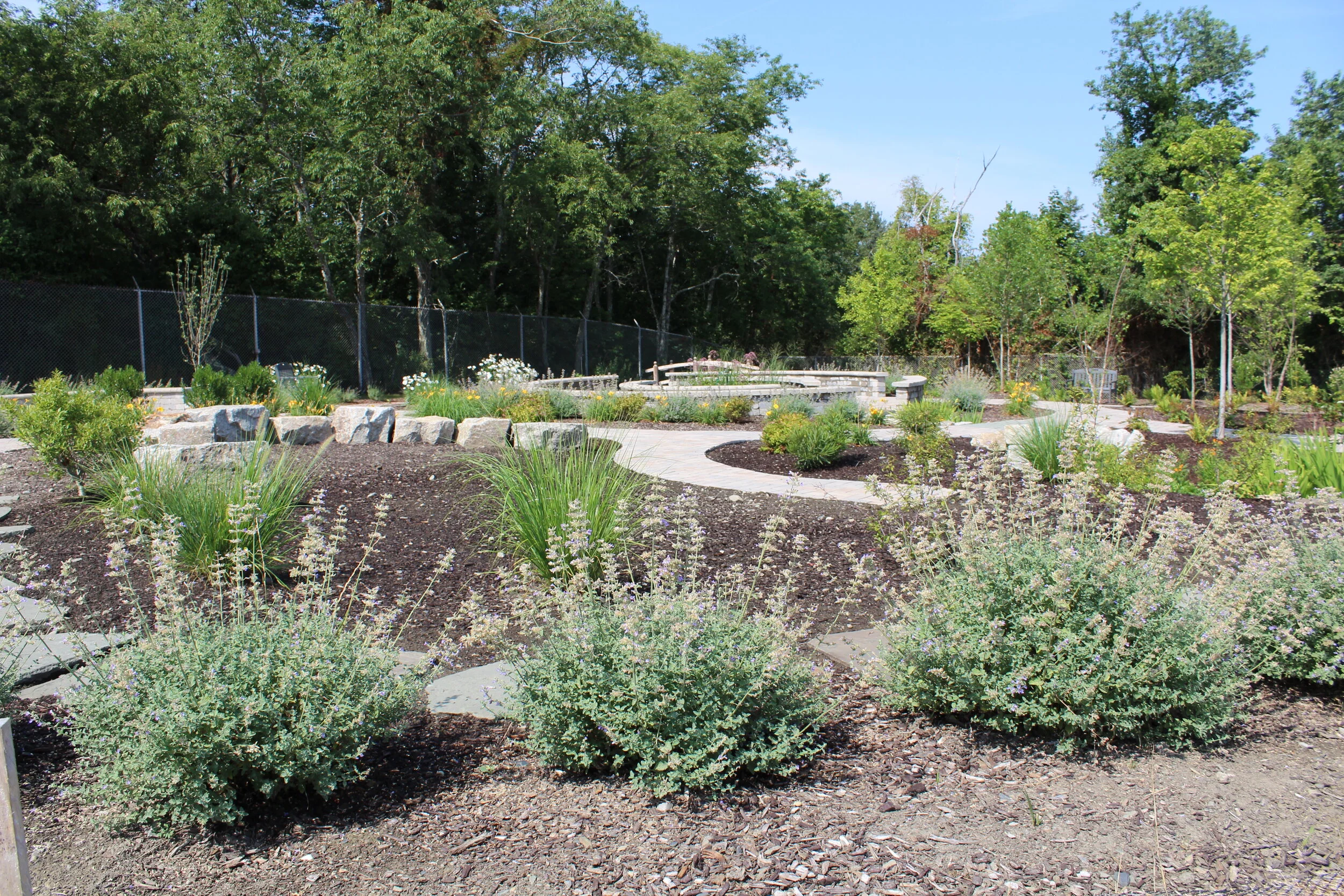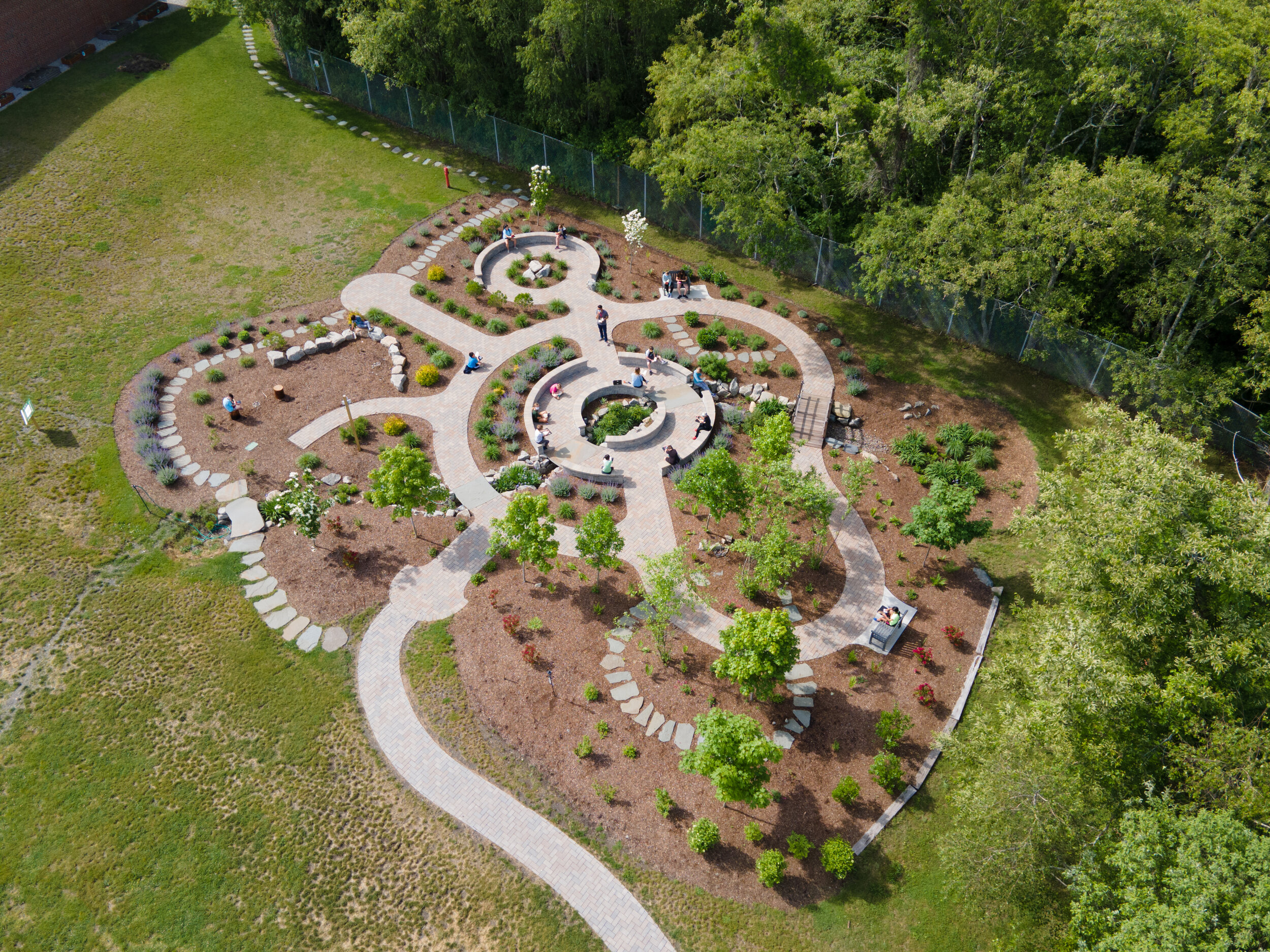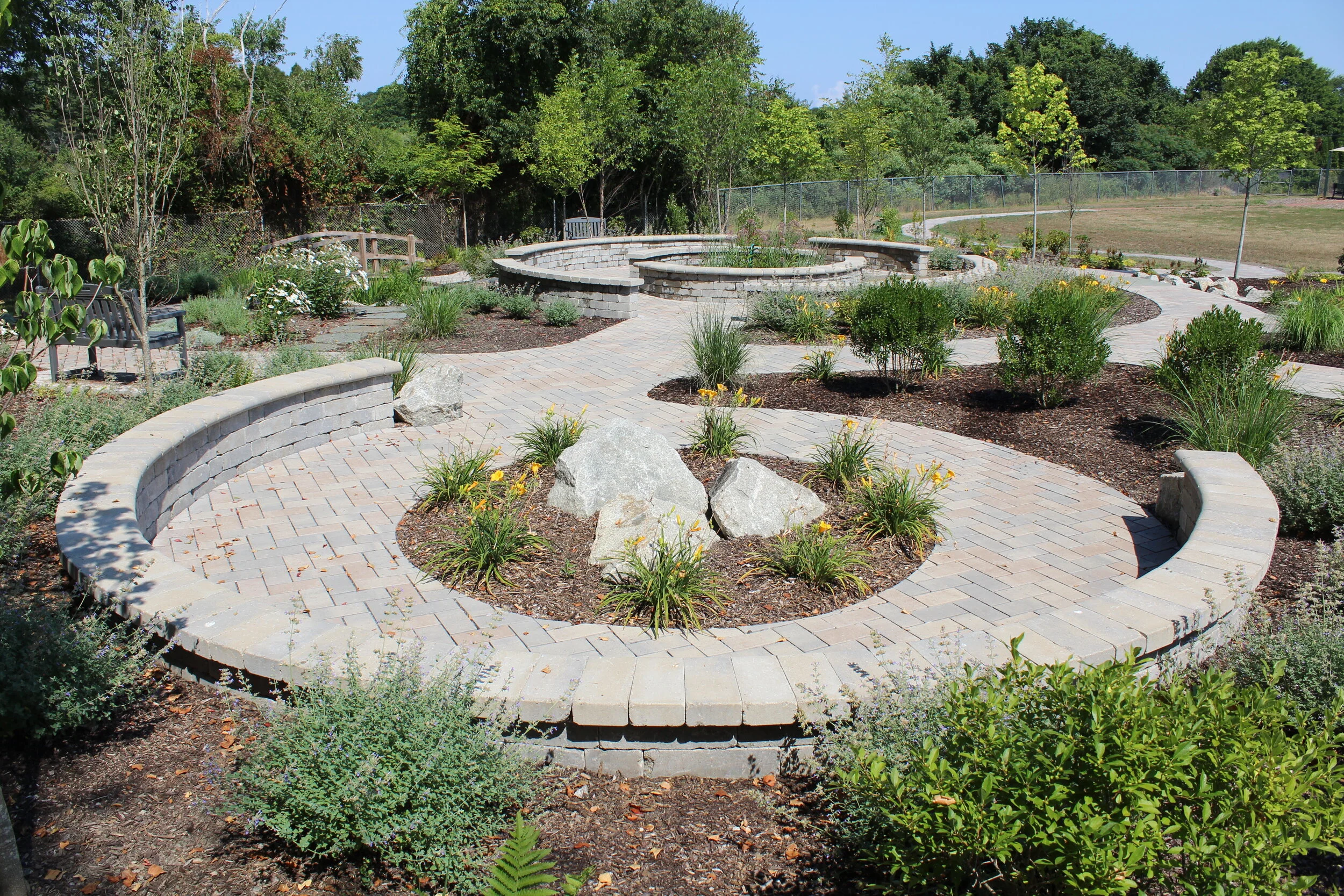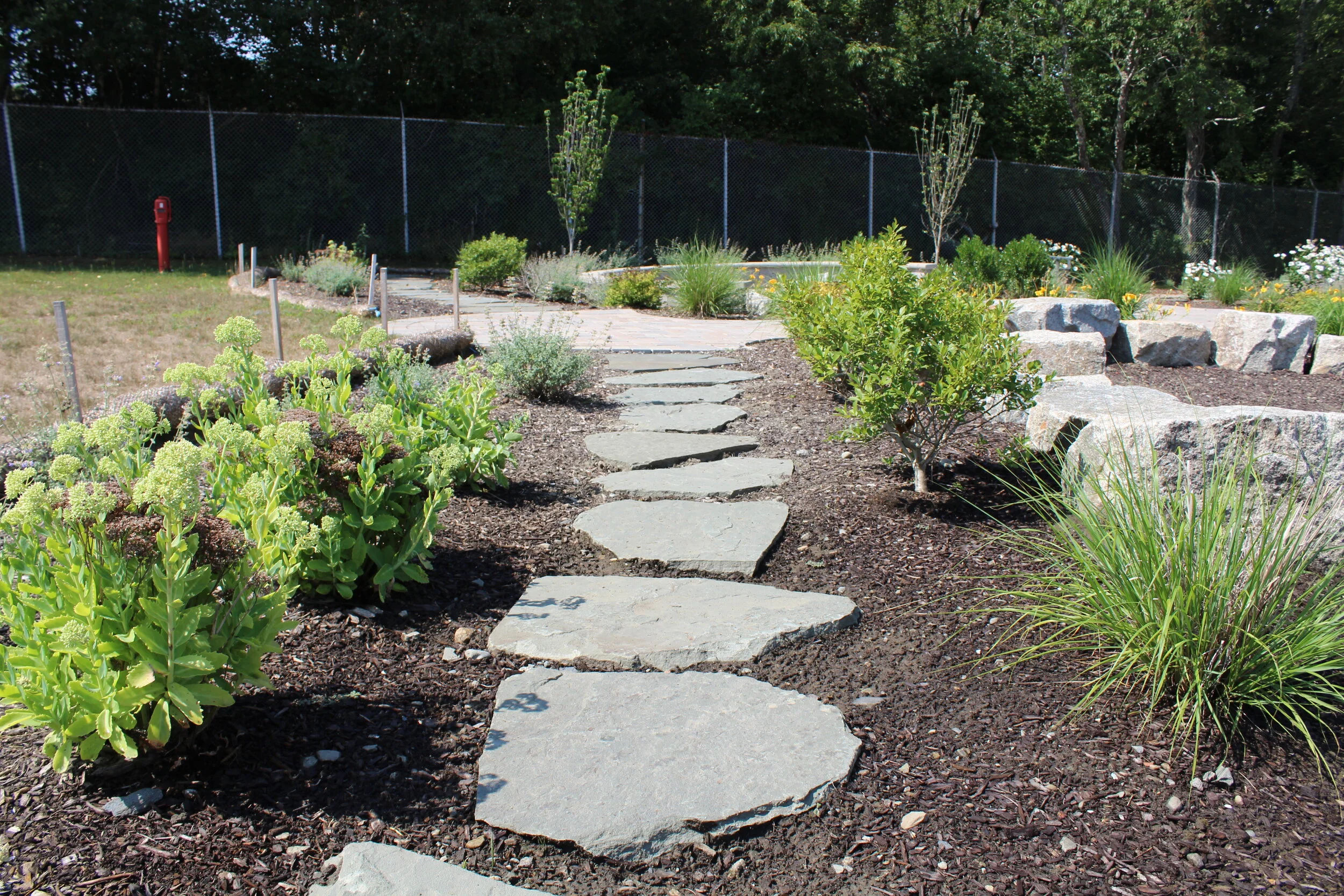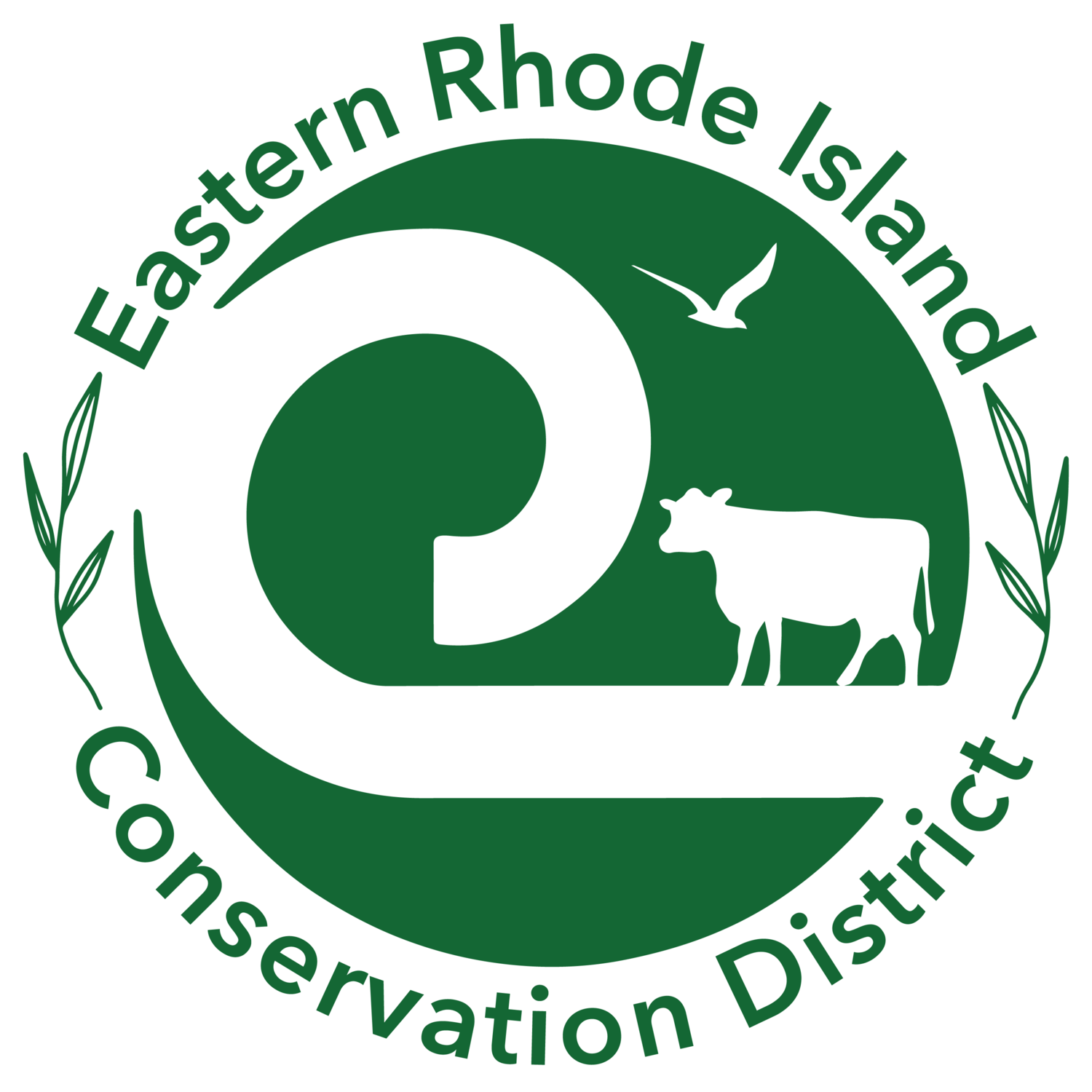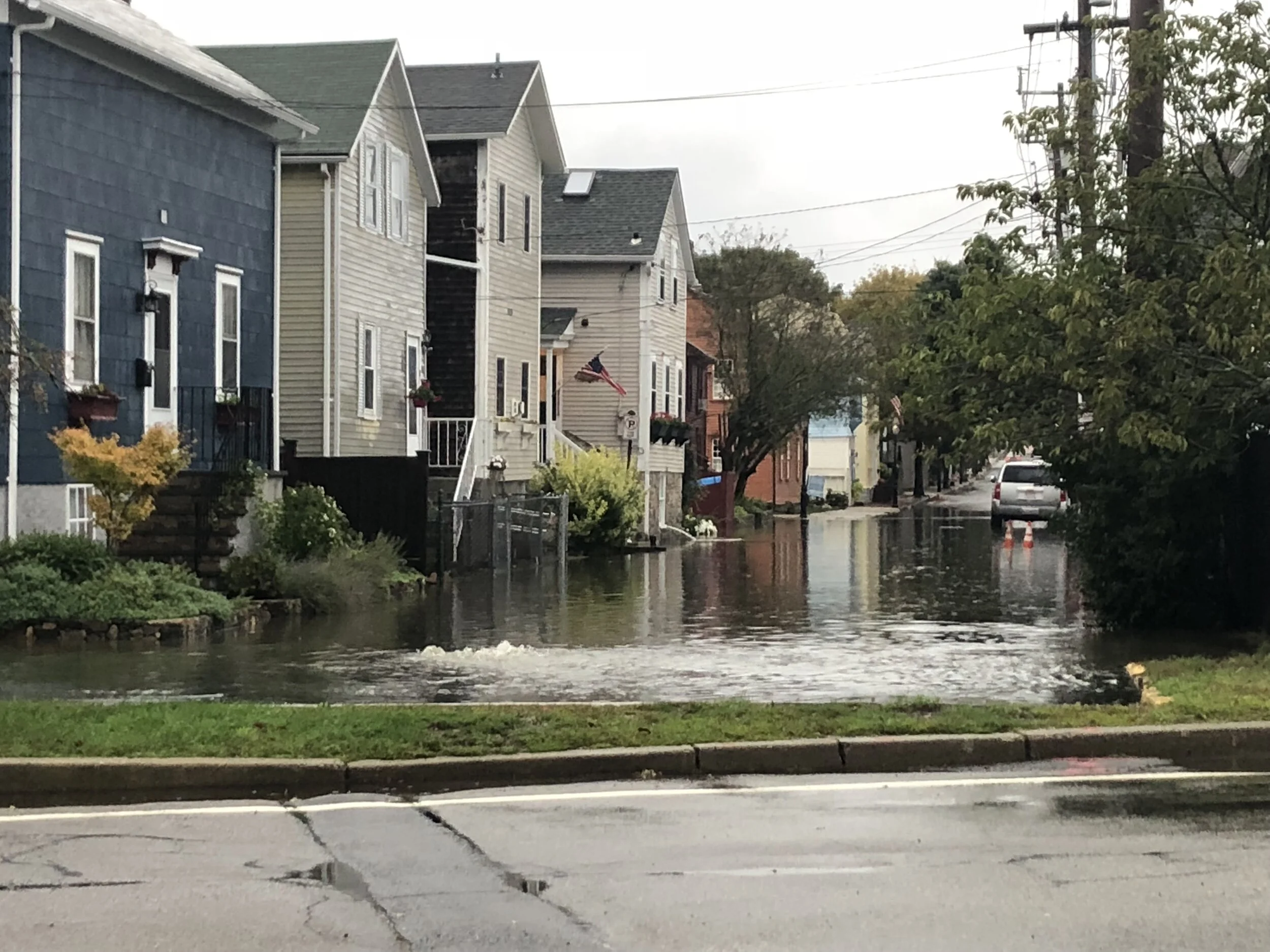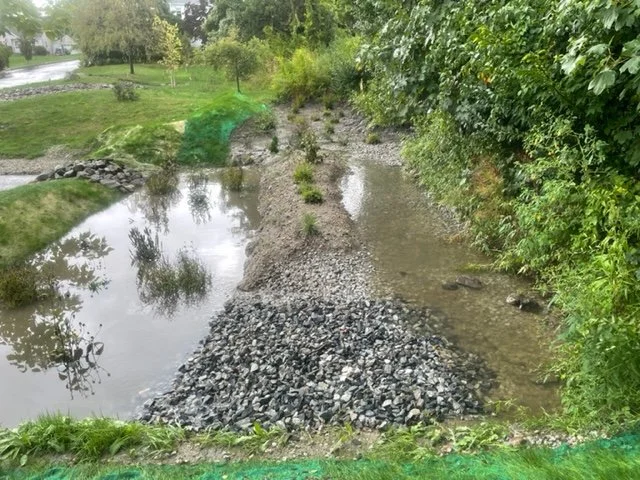Upcoming Stormwater Events
Residential Stormwater Info Session
Are you a residential property owner or manager in Eastern Rhode Island? Do you have rising concerns about stormwater management on your property?
Join the Eastern Rhode Island Conservation District (ERICD) and Sustainability Studies capstone class of Roger Williams University (RWU) for an information session on Residential Stormwater Management on Monday, April 28th at the Quinta Gamelin Community Center in Bristol, RI at 6:30PM.
This event is free and open to the public. Please contact Ryan at rbrancato.ericd@gmail.com with any questions.
Stormwater
When it rains, stormwater washes toxic pollutants into our watershed. Pollutants (such as fertilizers, animal waste, pesticides, and car leakage) pour down our driveways, sidewalks, parking lots, and streets – eventually flowing in Narragansett Bay.
Green Infrastructure
Installing Green Stormwater Infrastructure can help to absorb water more naturally into the ground, improving the health of our coastal and drinking waters! Examples of Green Stormwater Infrastructure include a rain barrels, rain gardens, or a pervious pavers driveways.
Example of stormwater flooding in Newport, RI.
Green Infrastructure solutions such as rain barrels help divert polluted stormwater from the waterways.
Protecting Melville Pond in Portsmouth
Rain Garden and OLAZ at Melville Elementary School in Portsmouth, RI
This Outdoor Learning Activity Zone acts as an outdoor classroom. The design incorporates a rain garden, which collects polluted stormwater that would normally flow into Melville Pond, an integral water source in the Narragansett Bay Watershed. Each year it removes an average of .48 pounds of phosphorus, .33 pounds of zinc, and 4.28 pounds of nitrogen. People of all abilities can enjoy this garden because it is fully handicap accessible.
This project was made possible by a partnership between ERICD, Thrive Outside, RIDOT, and Melville School.

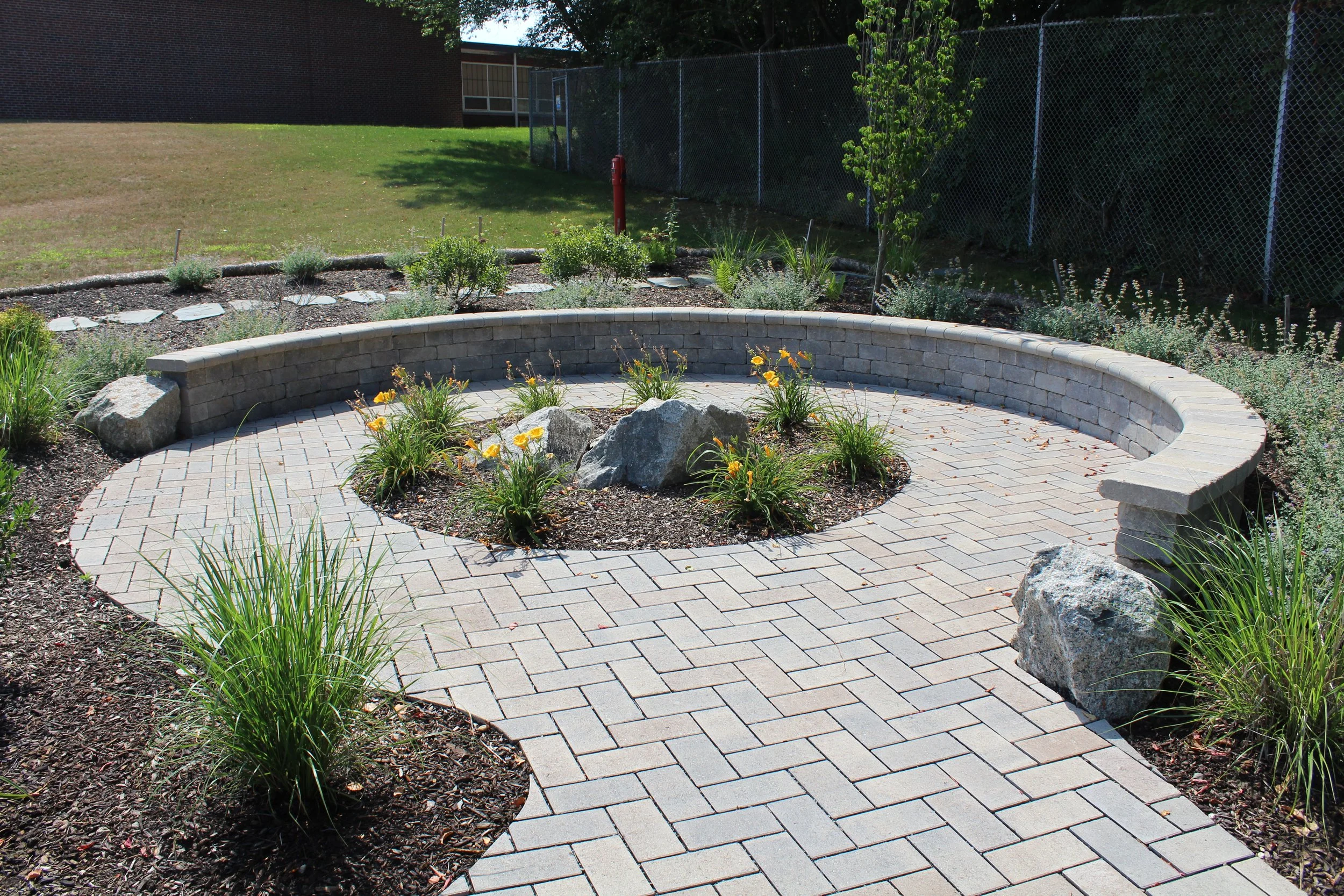
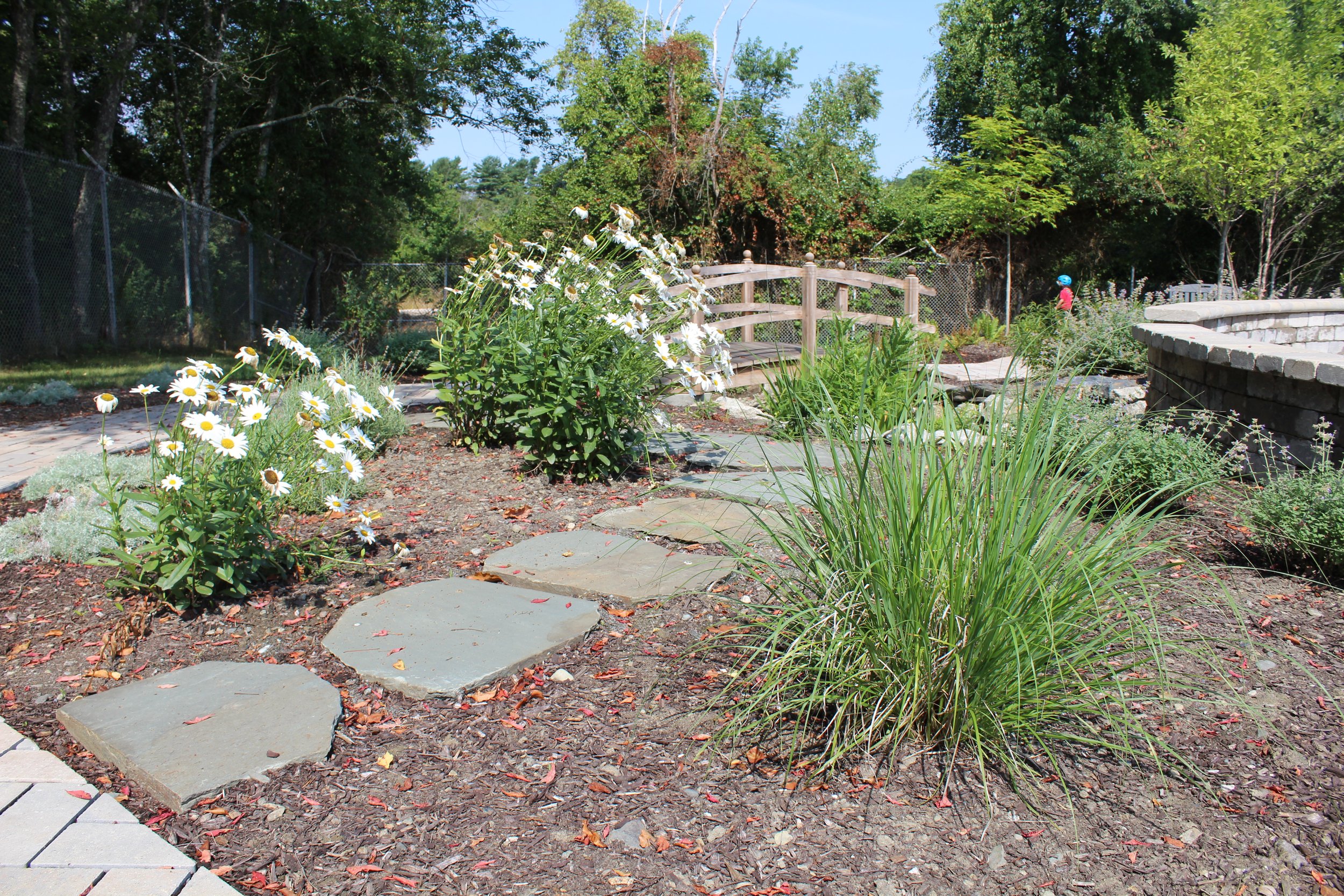
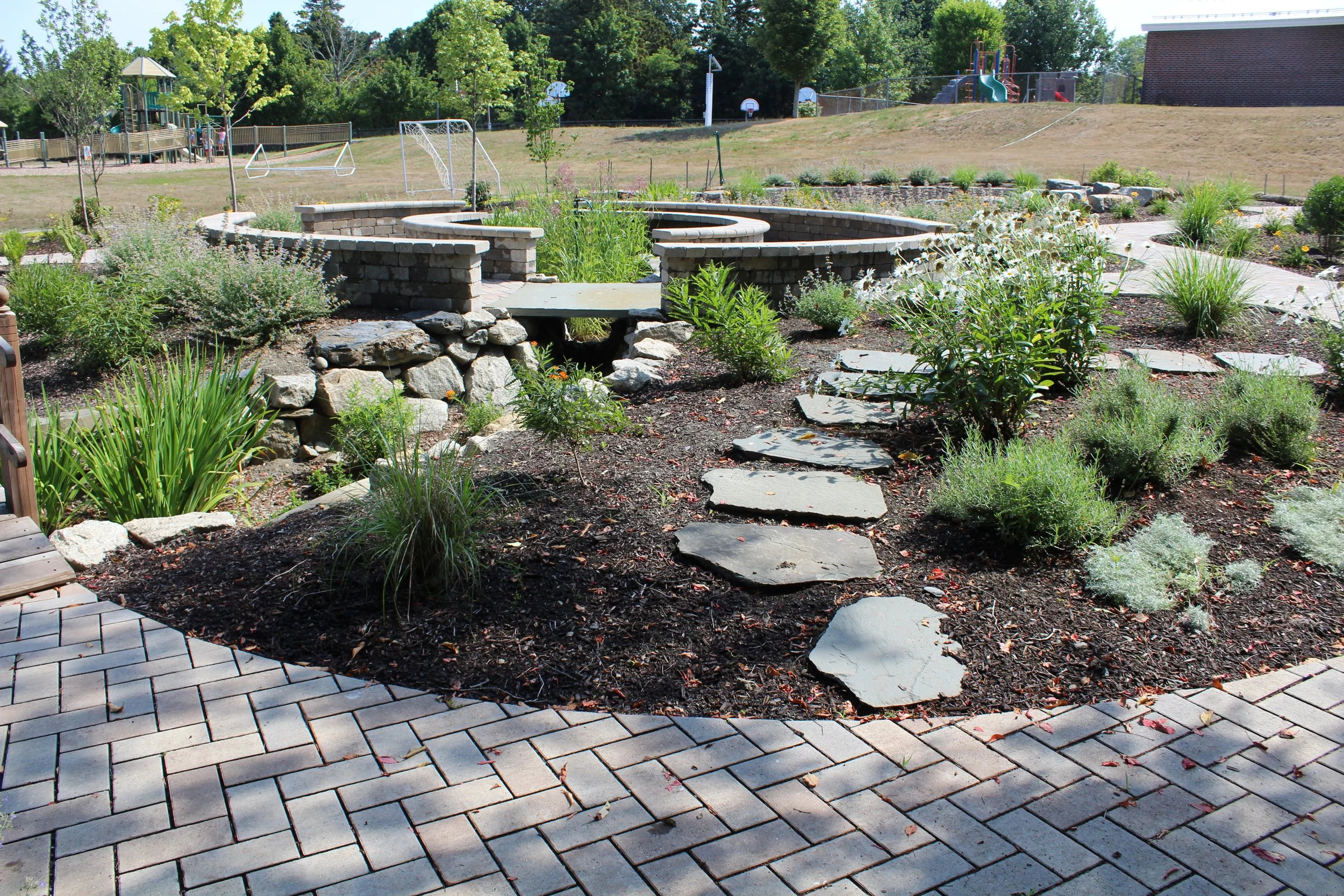



June 2022 Ribbon Cutting:


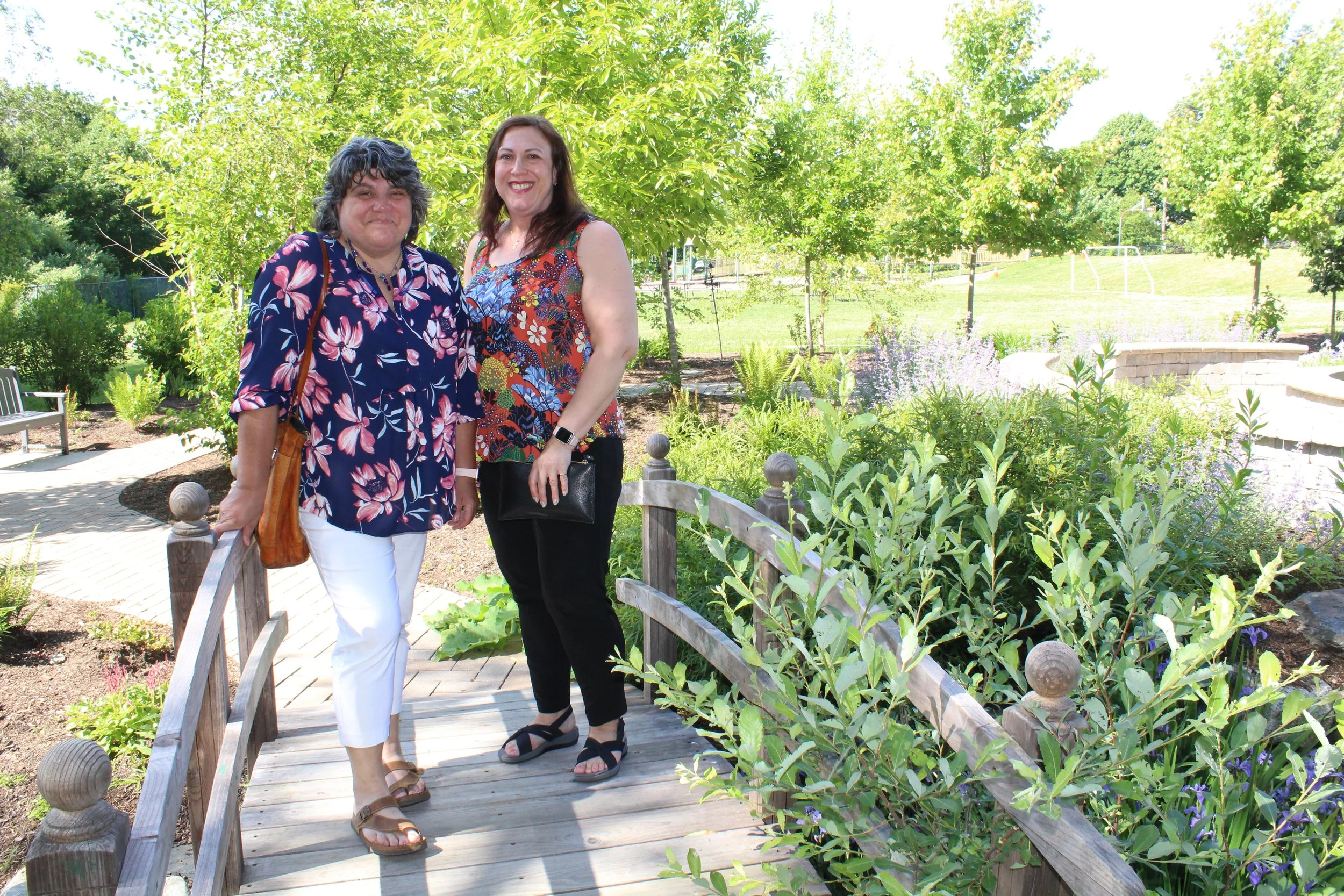

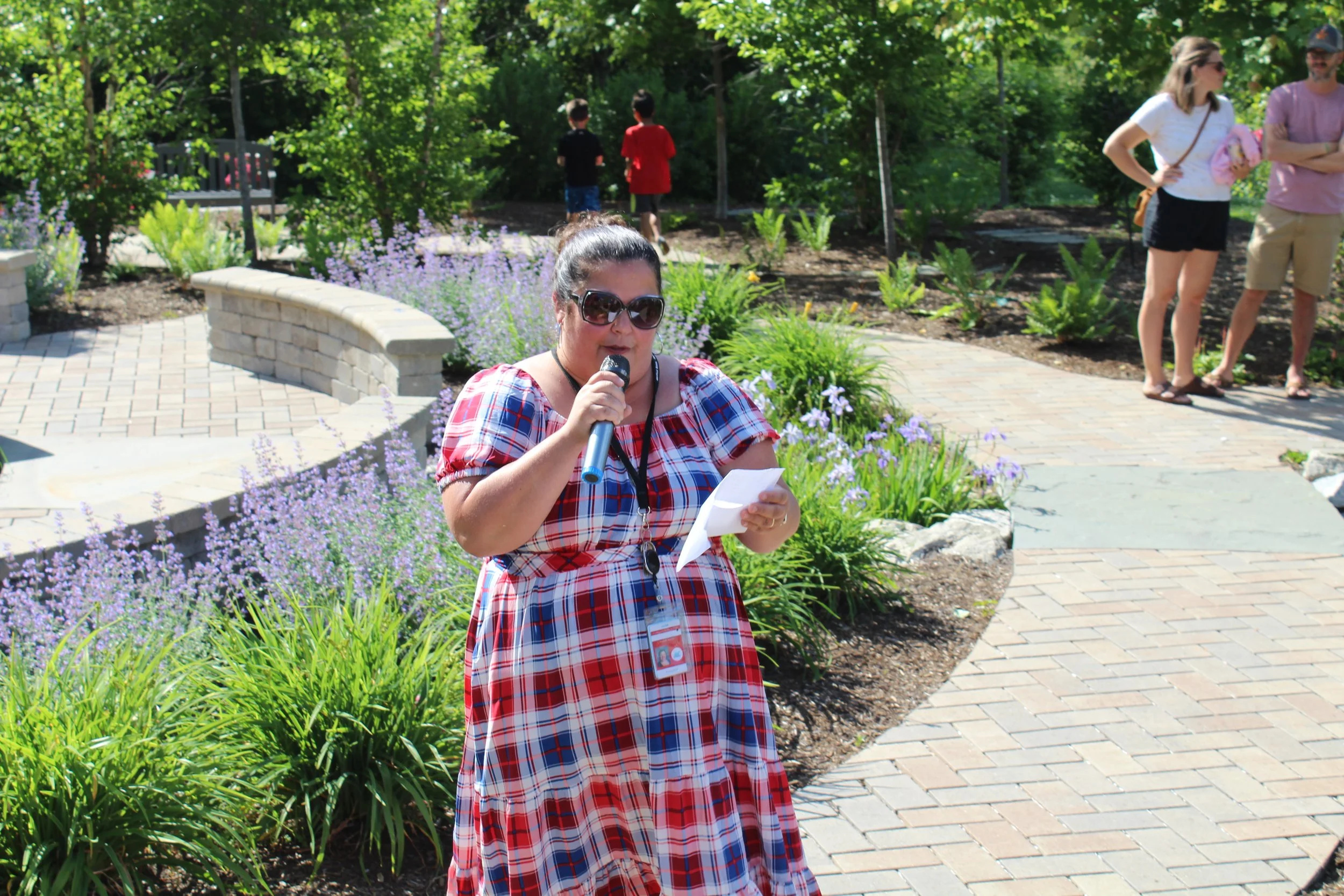
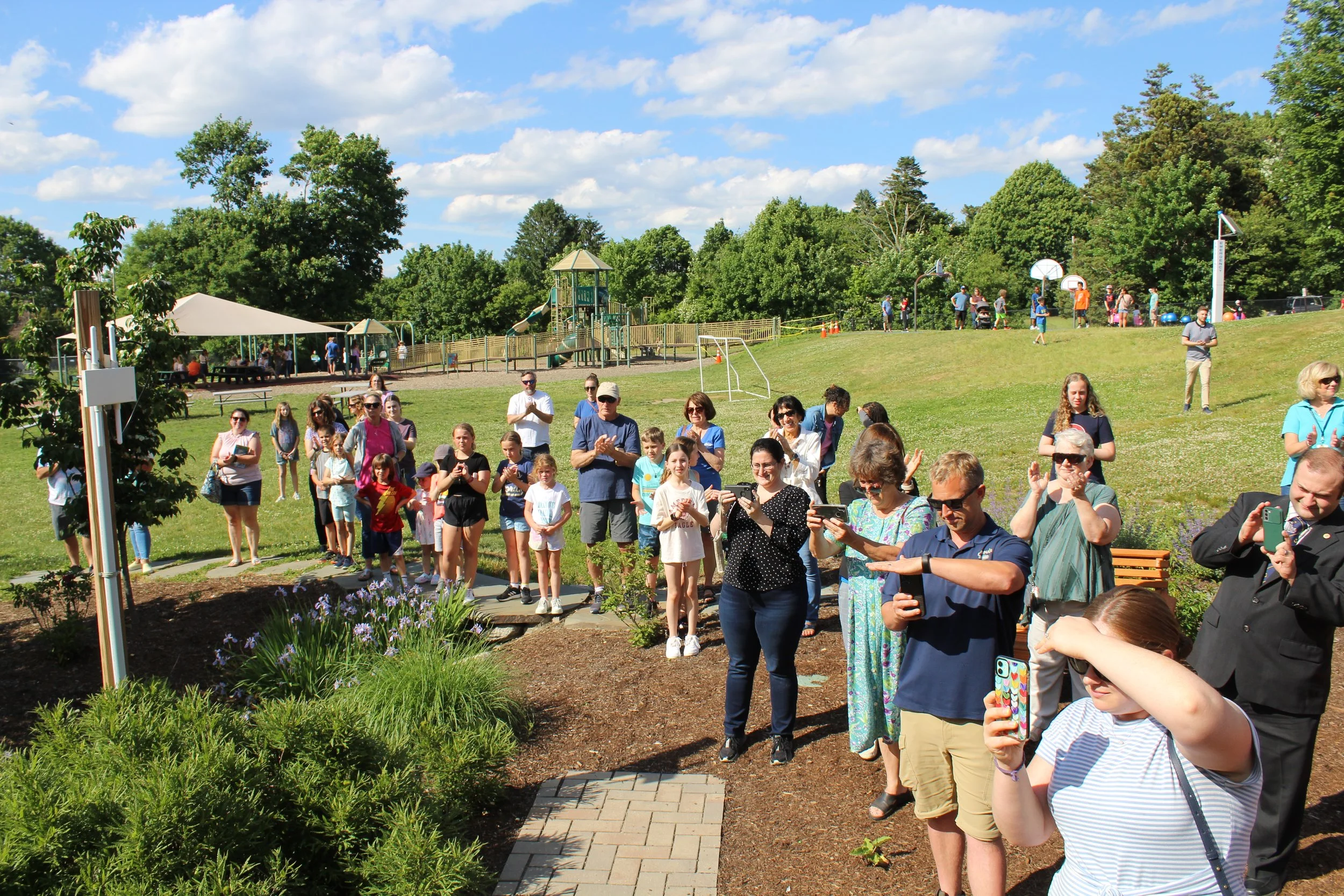

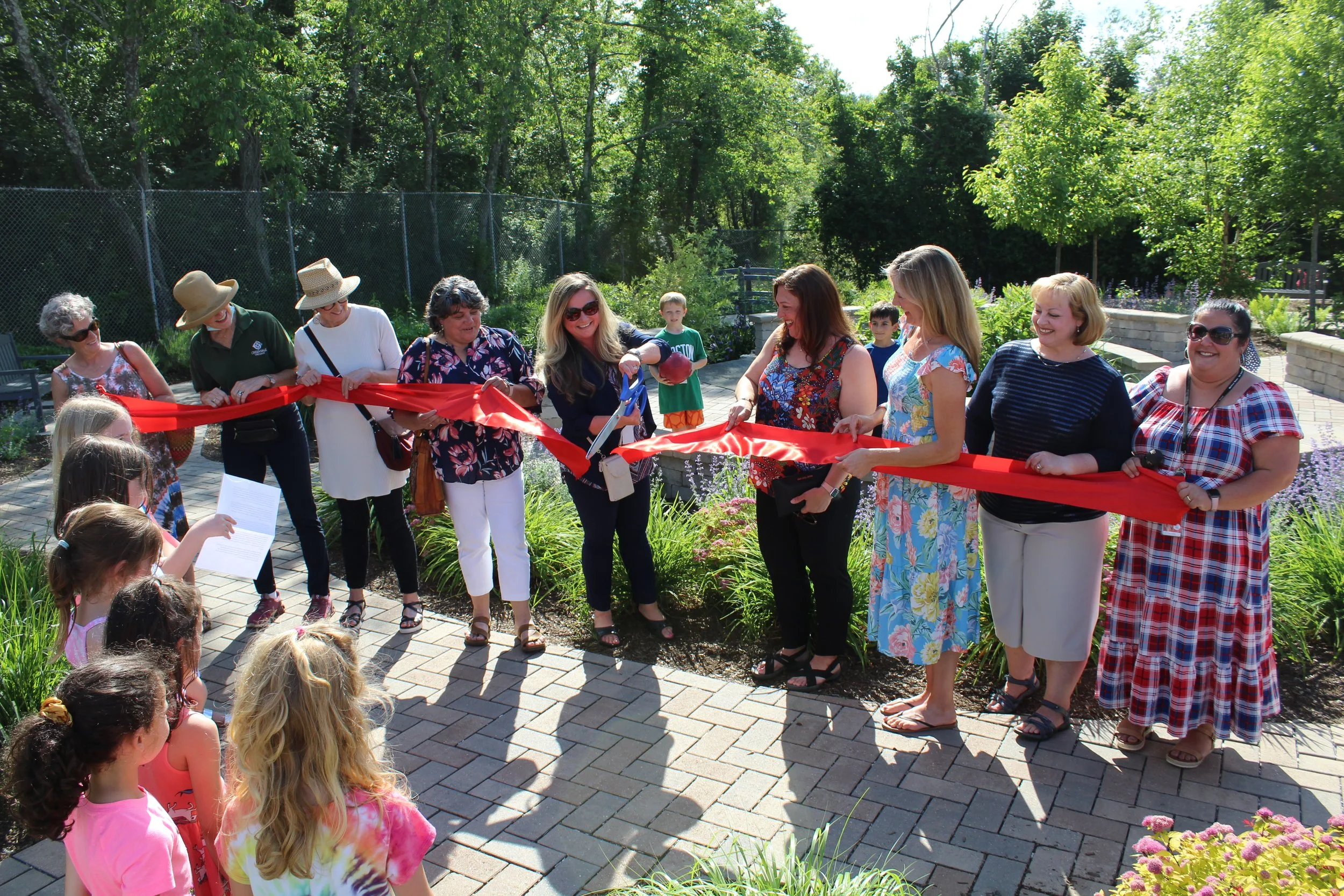
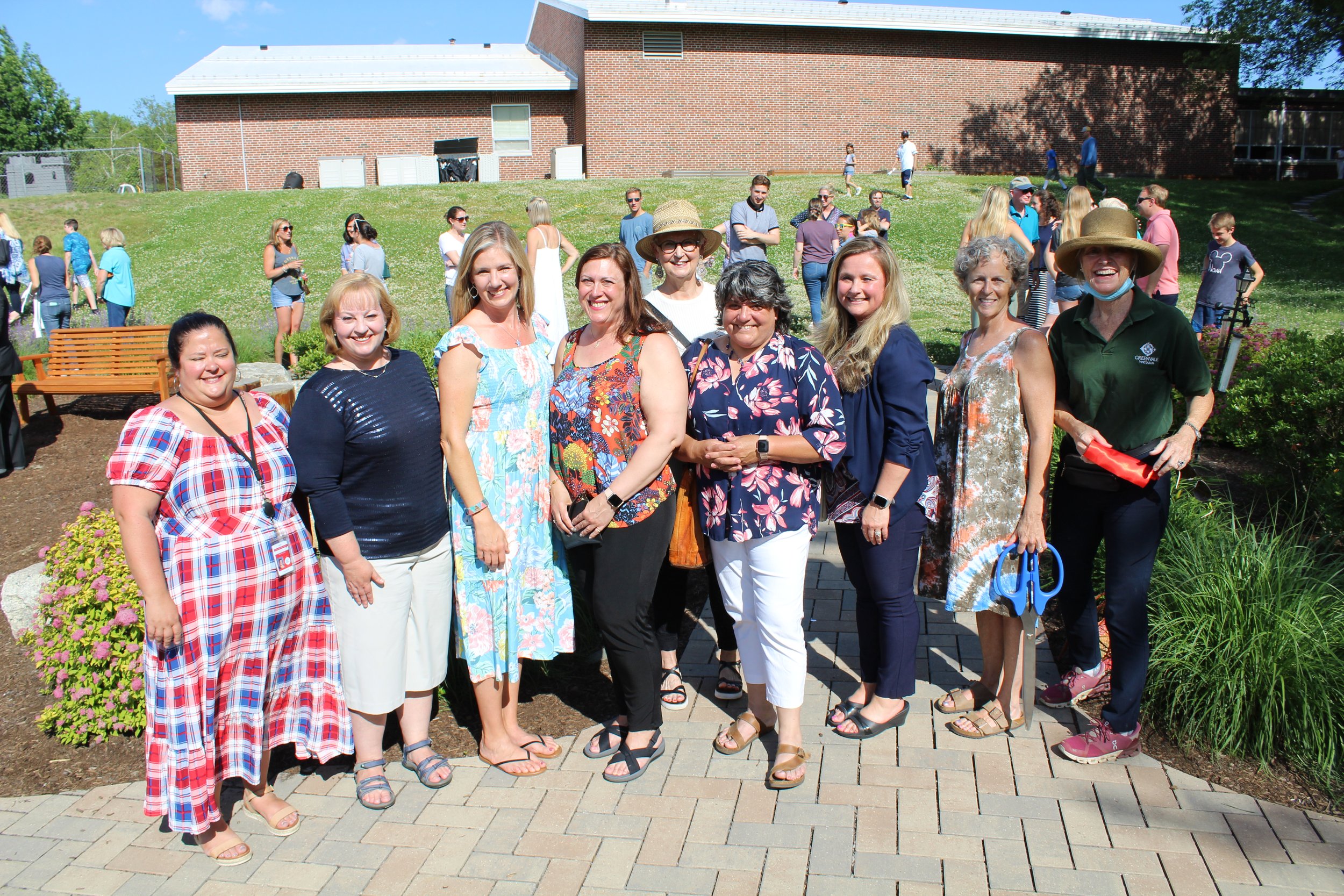


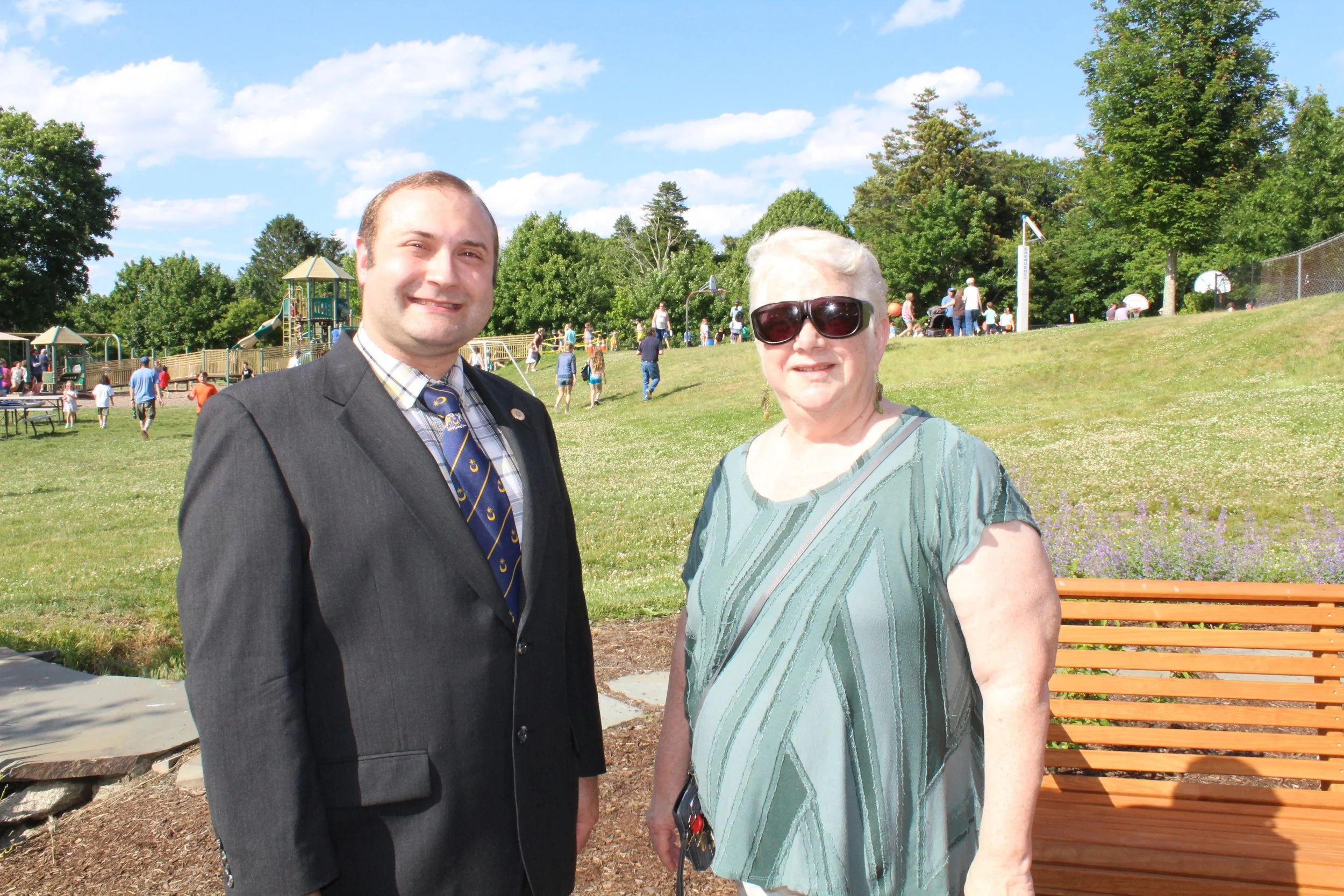
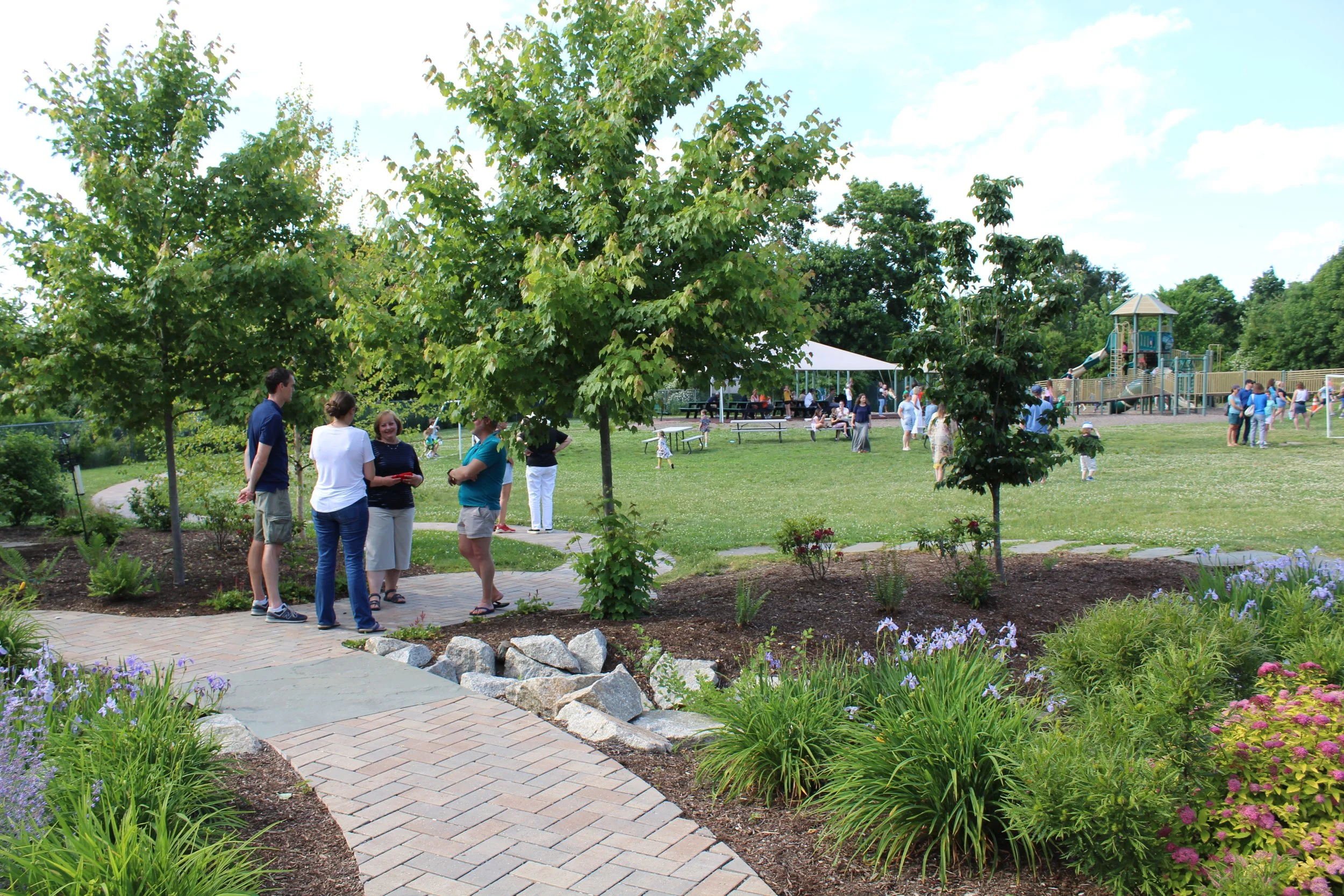

Lifting up voices of Newport’s North End residents to grow green infrastructure relationships.
Through funding provided by The Funders Network, van Beuren Charitable Foundation, Prince Charitable Trusts and the Rhode Island Foundation, ERICD partnered with the City of Newport, the Women's Resource Center, the Newport Health Equity Zone and North End residents. The project's vision focused on fostering civic engagement in this under-represented community by educating them on stormwater issues and actively engaging them in the decision-making regarding solutions. They are the ones who decided where the neighborhood would be best served by a green infrastructure stormwater mitigation installation.
The Green Infrastructure BMP system was installed at Pell Elementary School. Water enters the system in two areas. The first opening is a soft opening designed for light rain storms. It is lined with plants, which absorb the stormwater. The second opening catches water at high velocity rates from the above paved areas. This opening is lined with riprap stone to slow the water entering the system. Once the water enters the system, it is first stored in a fore bay and then overflows into a second bay. Both bays were dug out four feet and filled with stone and engineered soil. We than planted the second bay to help suck up water using the plants. Combined, the bays treat 11,700 gallons of water per one-quarter inch rain event. Once the system is filled up (11,700 gallons) the water is still treated by slowing it down enough using riprap. Prior to this system being installed, the water would run quickly over the drains, causing flooding and allowing pollluted water to enter the watershed.
2022 Project Completion, Before a Storm
2022 Project Completion, Absorbing Stormwater
2021 Site Visit and Tour:
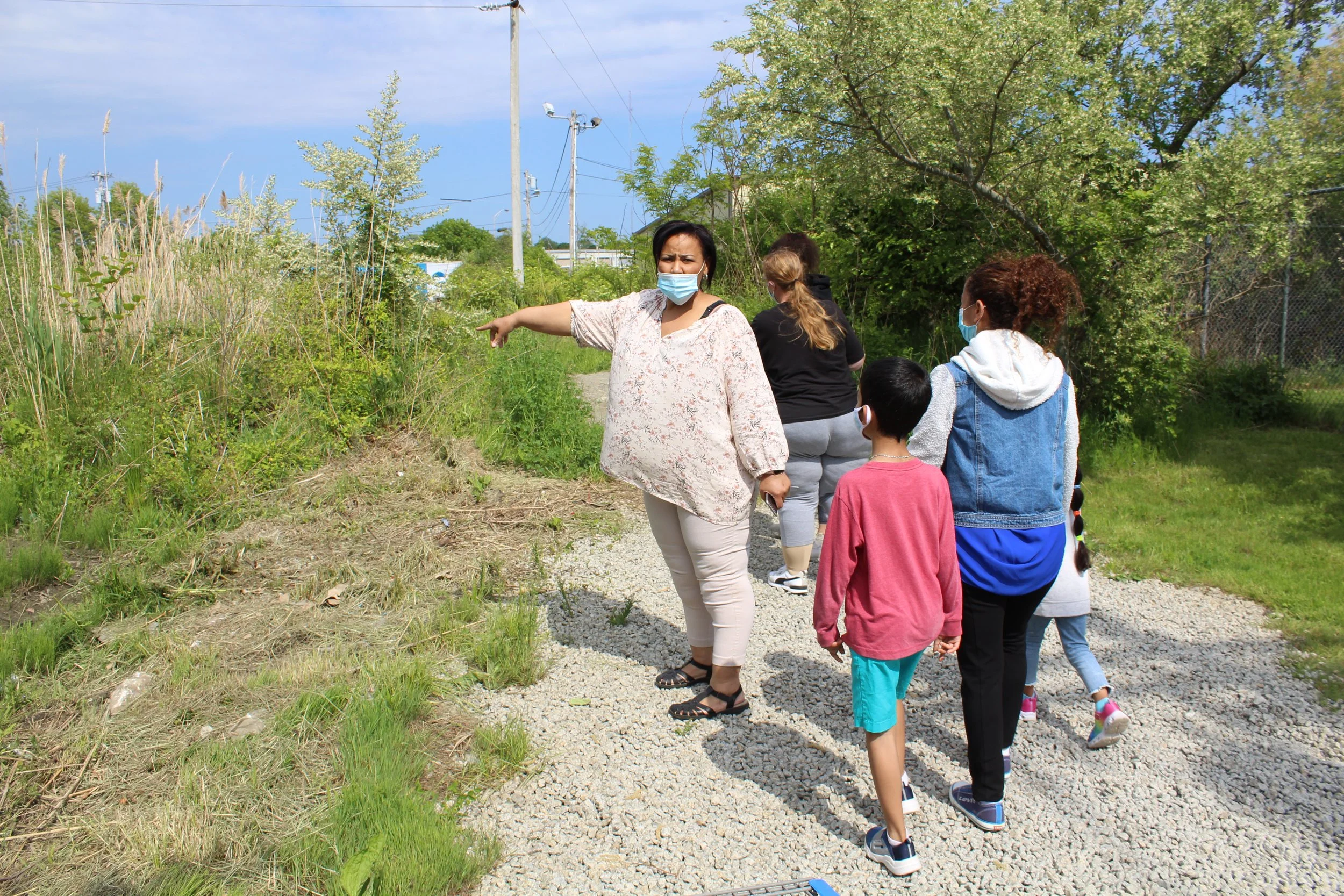

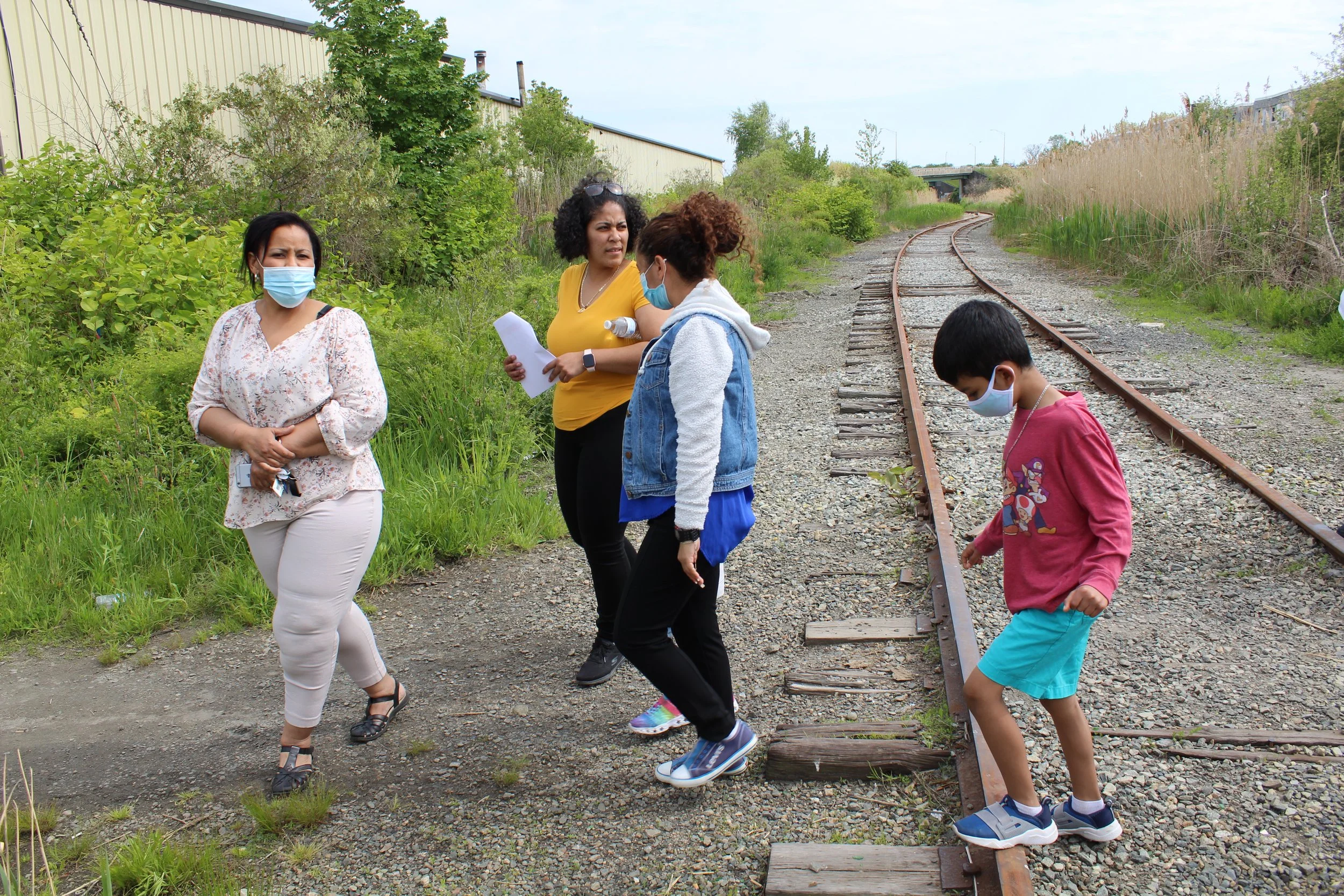
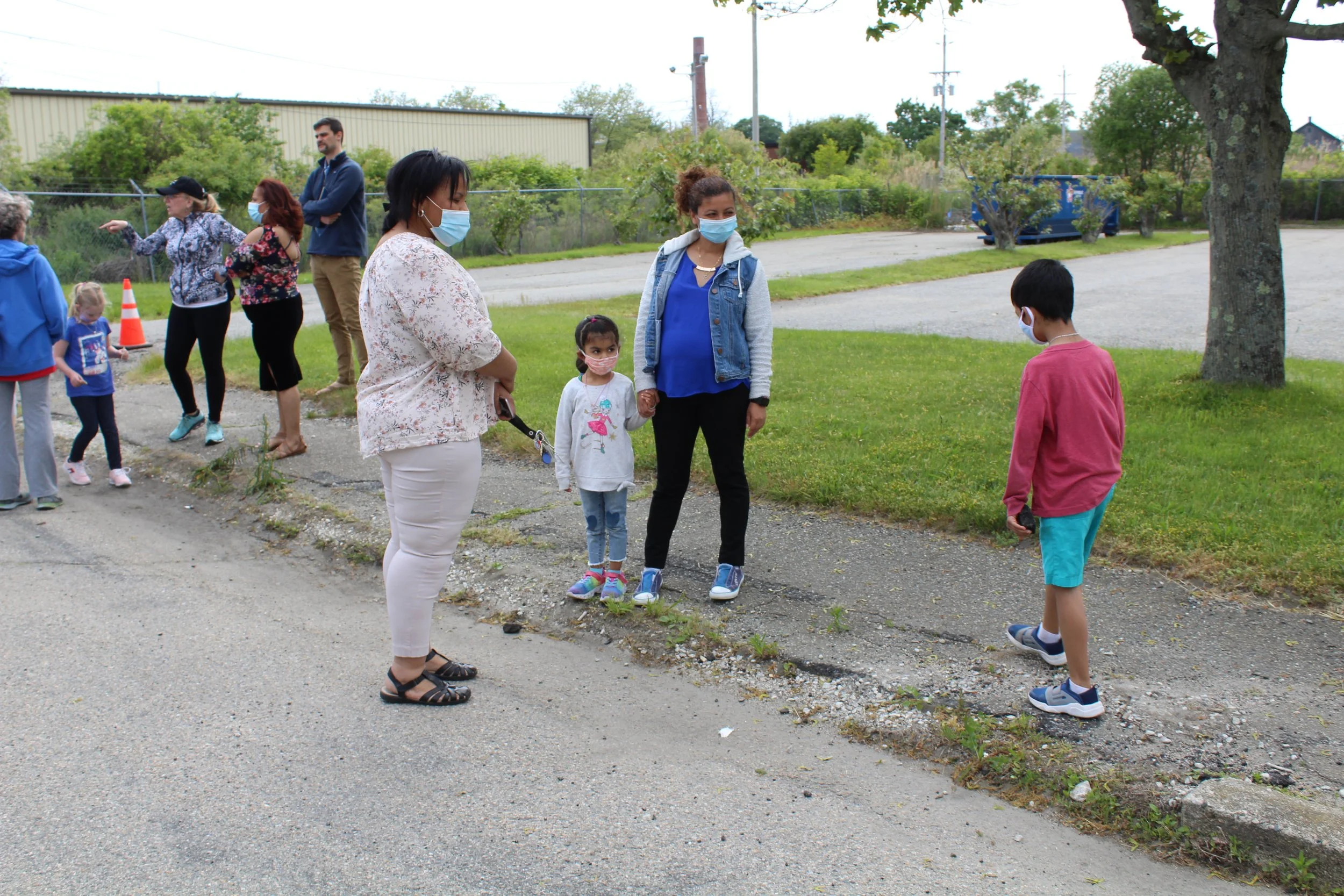
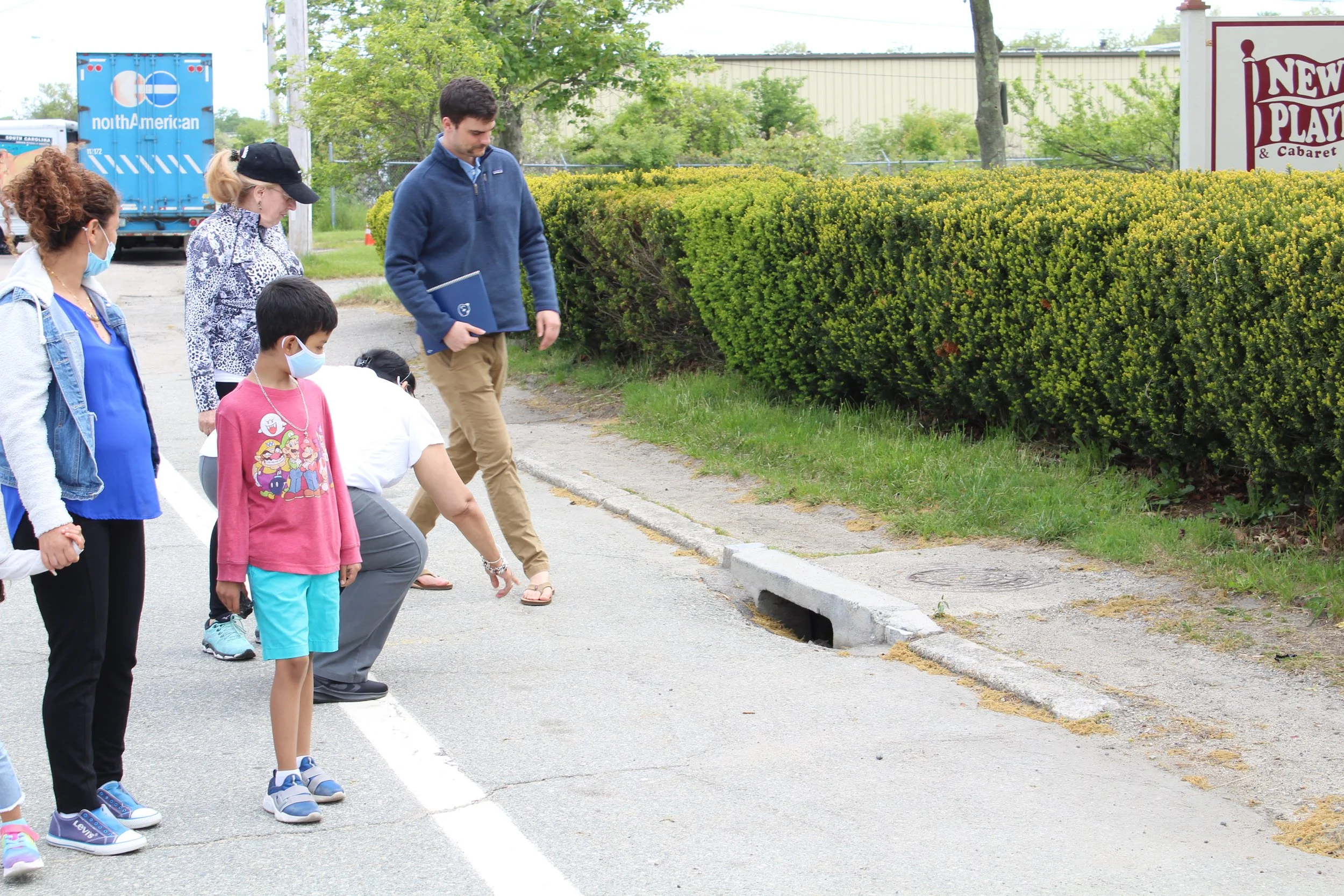

Completed Installation at Pell Elementary School:


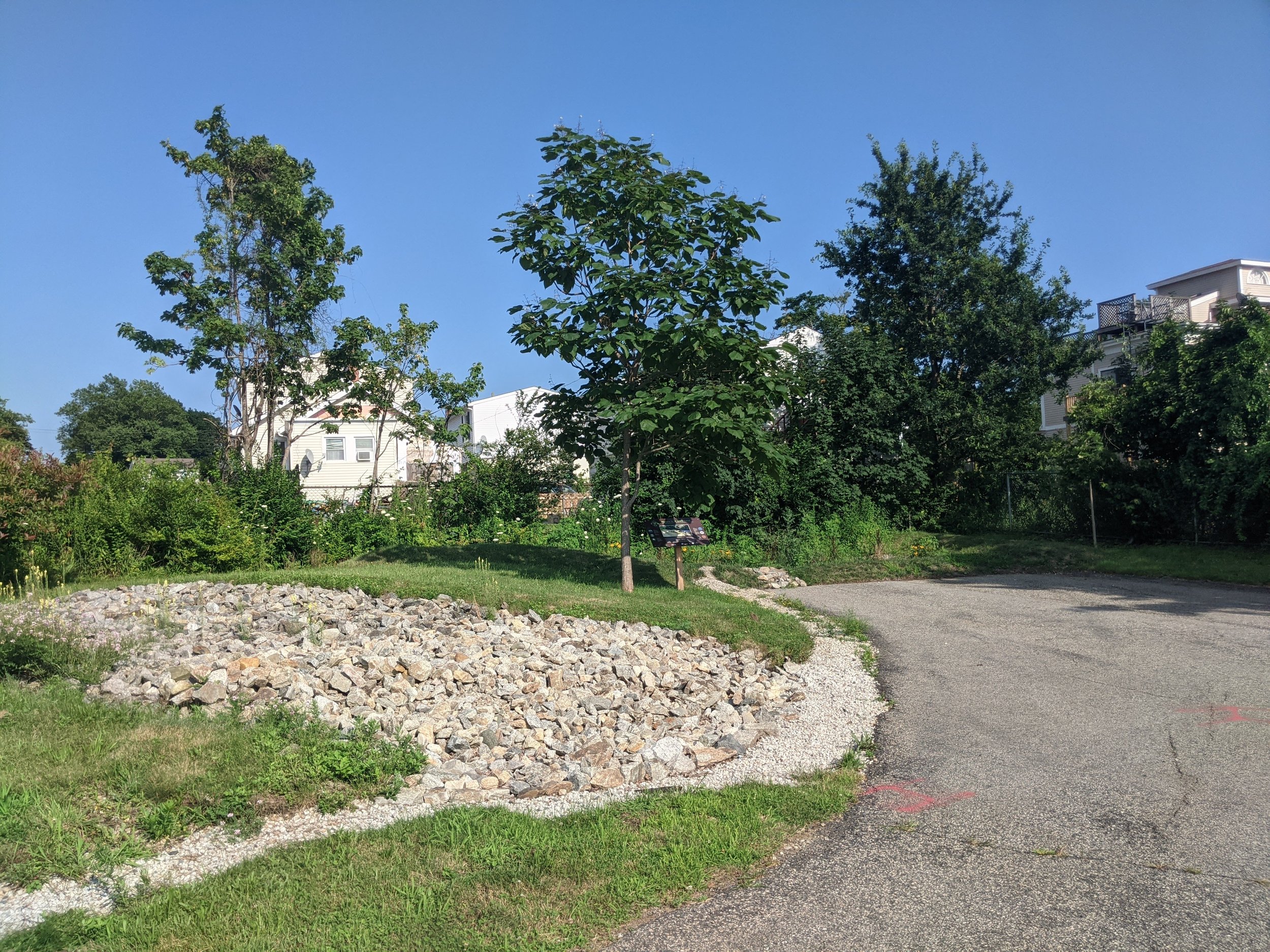
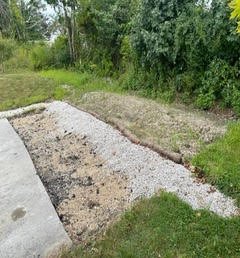
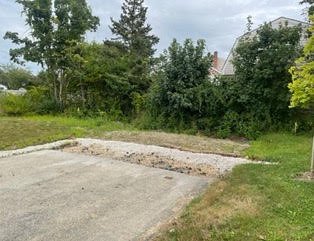
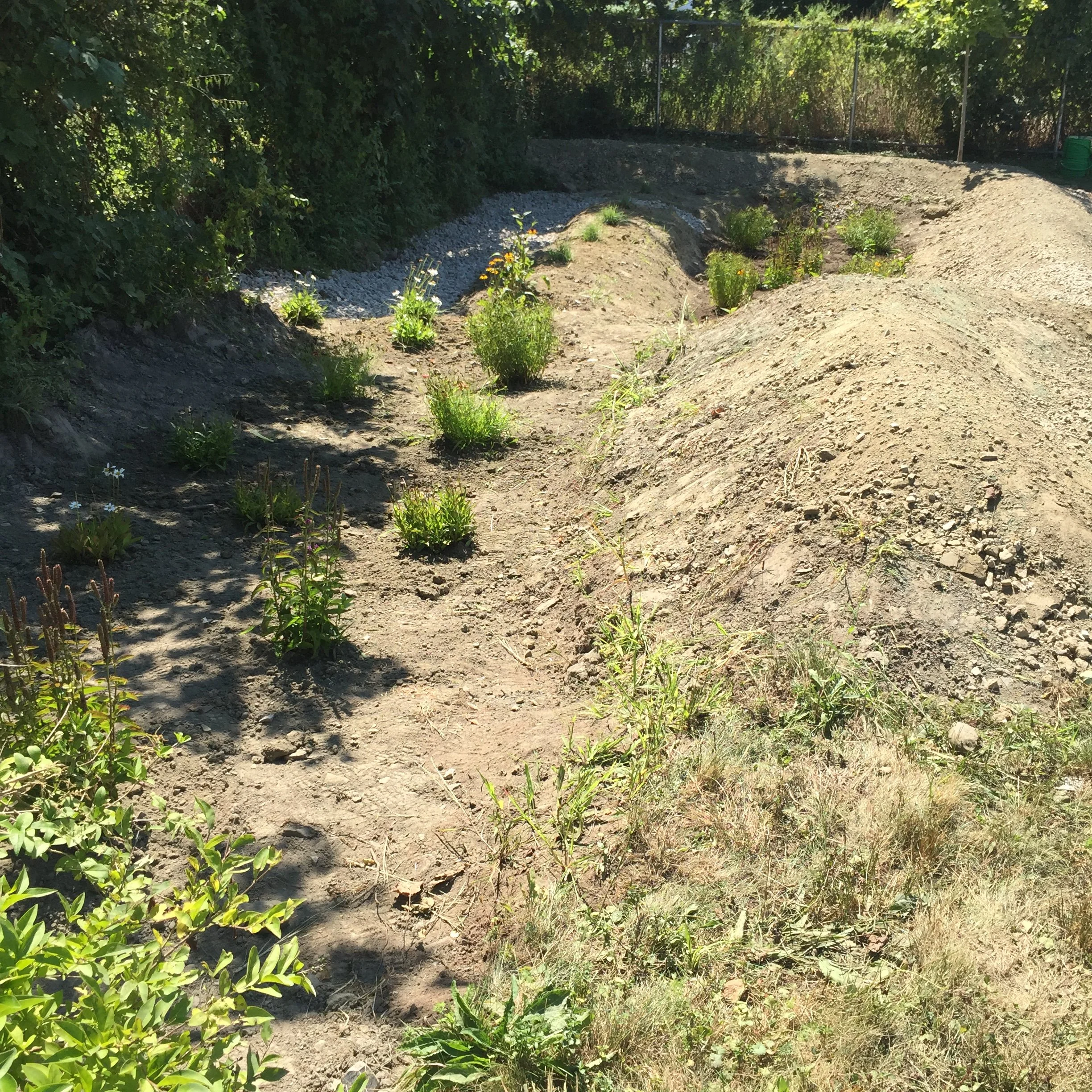
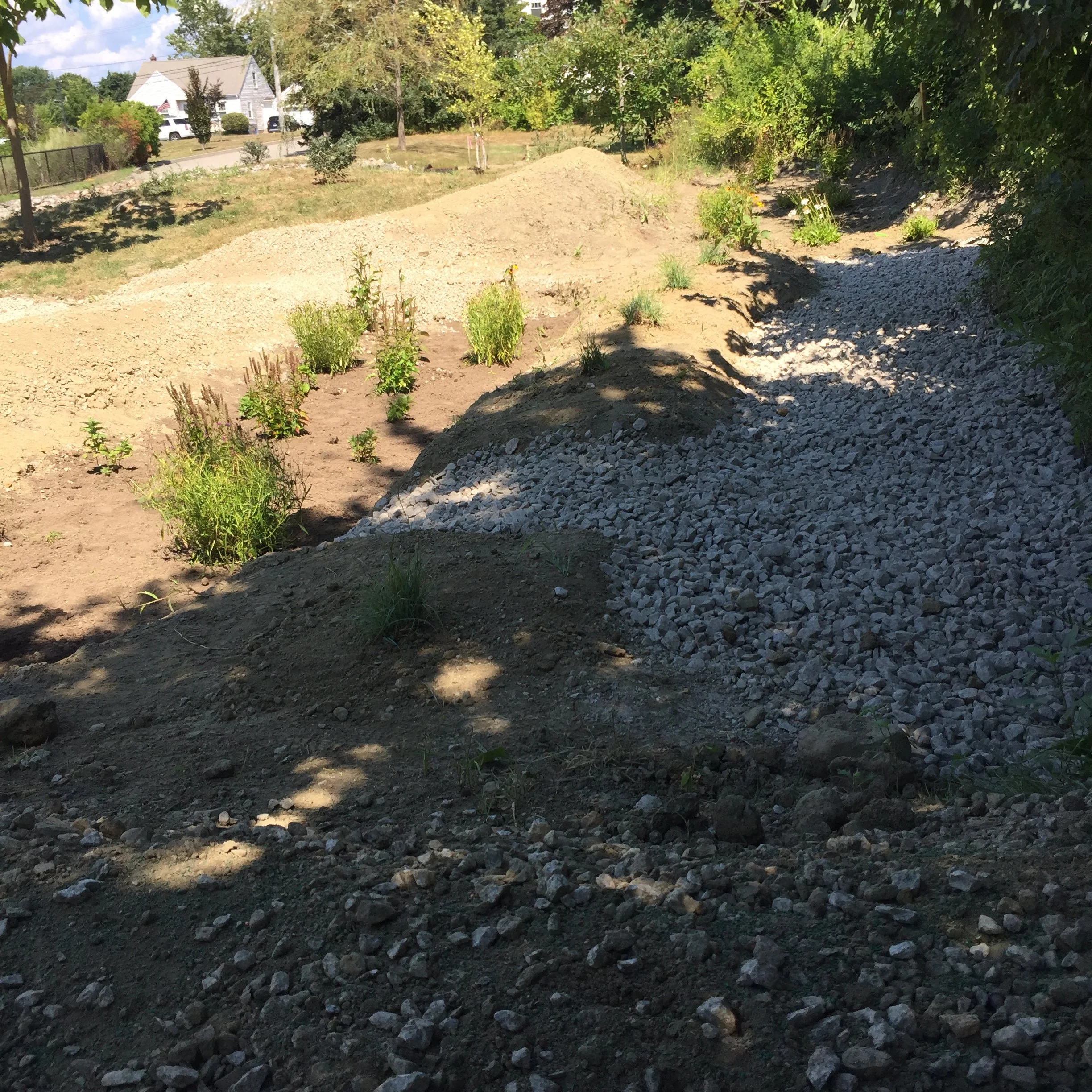


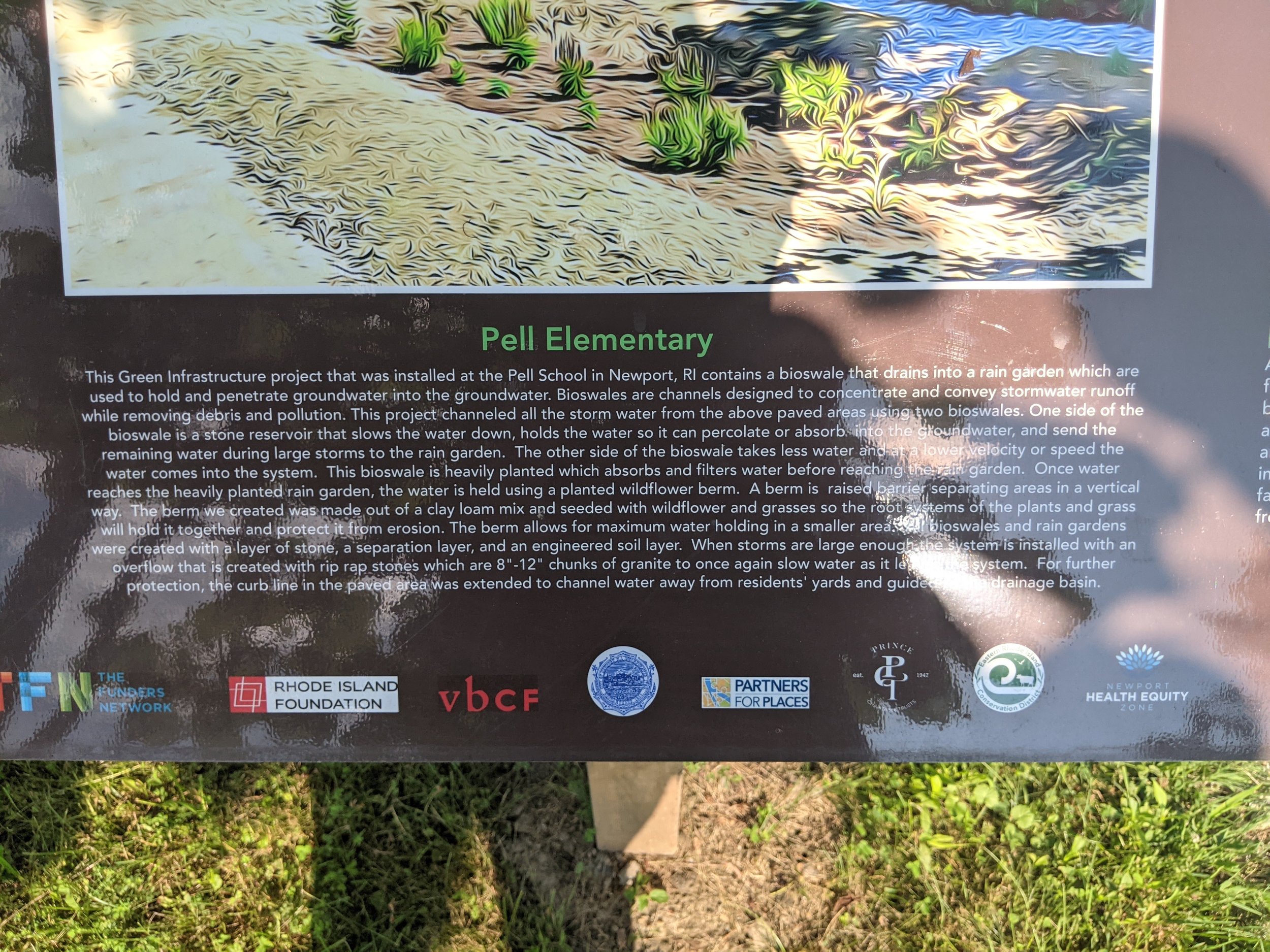
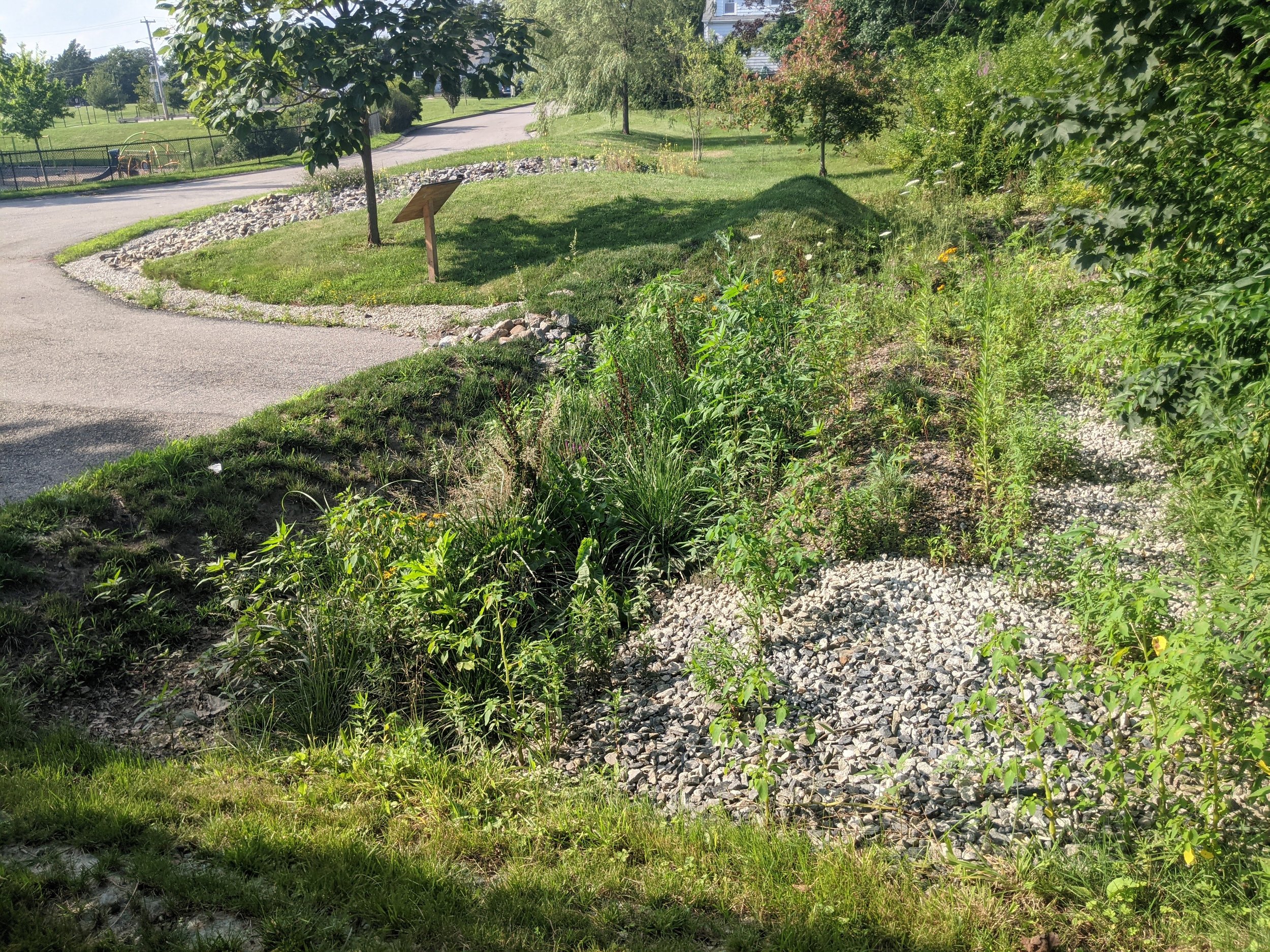
ERICD is on the leadership committee for the Rhode Island Green Infrastructure Coalition (GIC). The coalition includes non-profit organizations, architects, designers, builders, city planners and state and local policymakers as partners, who work together to promote nature based solutions for cleaning runoff pollution.
Stormwater Mitigation & Outdoor Learning Activity Zone
Melville Elementary School
Portsmouth, RI
The installation at Melville Elementary School in Portsmouth collects polluted stormwater that would normally flow into Melville Pond, an integral water source in the Narragansett Bay Watershed. This project was made possible by a partnership between ERICD, Melville, Rhode Island Department of Transportation, and Thrive Outside.
While it is working to absorb excess water, it is also serves as an Outdoor Learning Activity Zone with an outdoor classroom. The outdoor space allows students to learn safely while adhering social distancing protocols.
Uniquely, anyone can enjoy this garden because it is fully handicap accessible!
